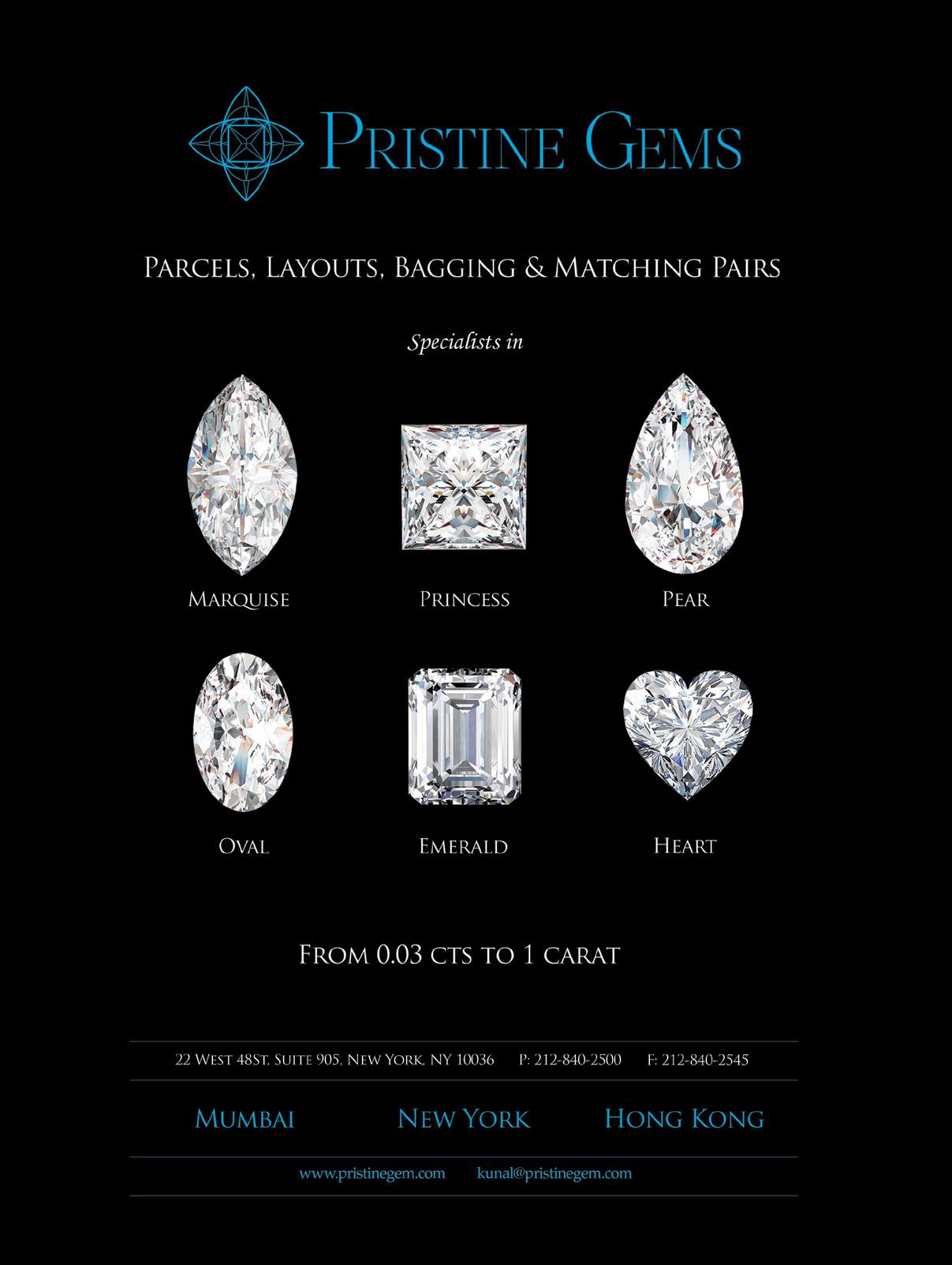HOLIDAY STOCK TIPS
From perennial classics to colorful, sentimental jewels: What you’ll want to have in-store this season
call to revive Europe’s dwindling lapidary sector

From perennial classics to colorful, sentimental jewels: What you’ll want to have in-store this season
call to revive Europe’s dwindling lapidary sector
The new World Diamond Council president’s powerful vision for the trade

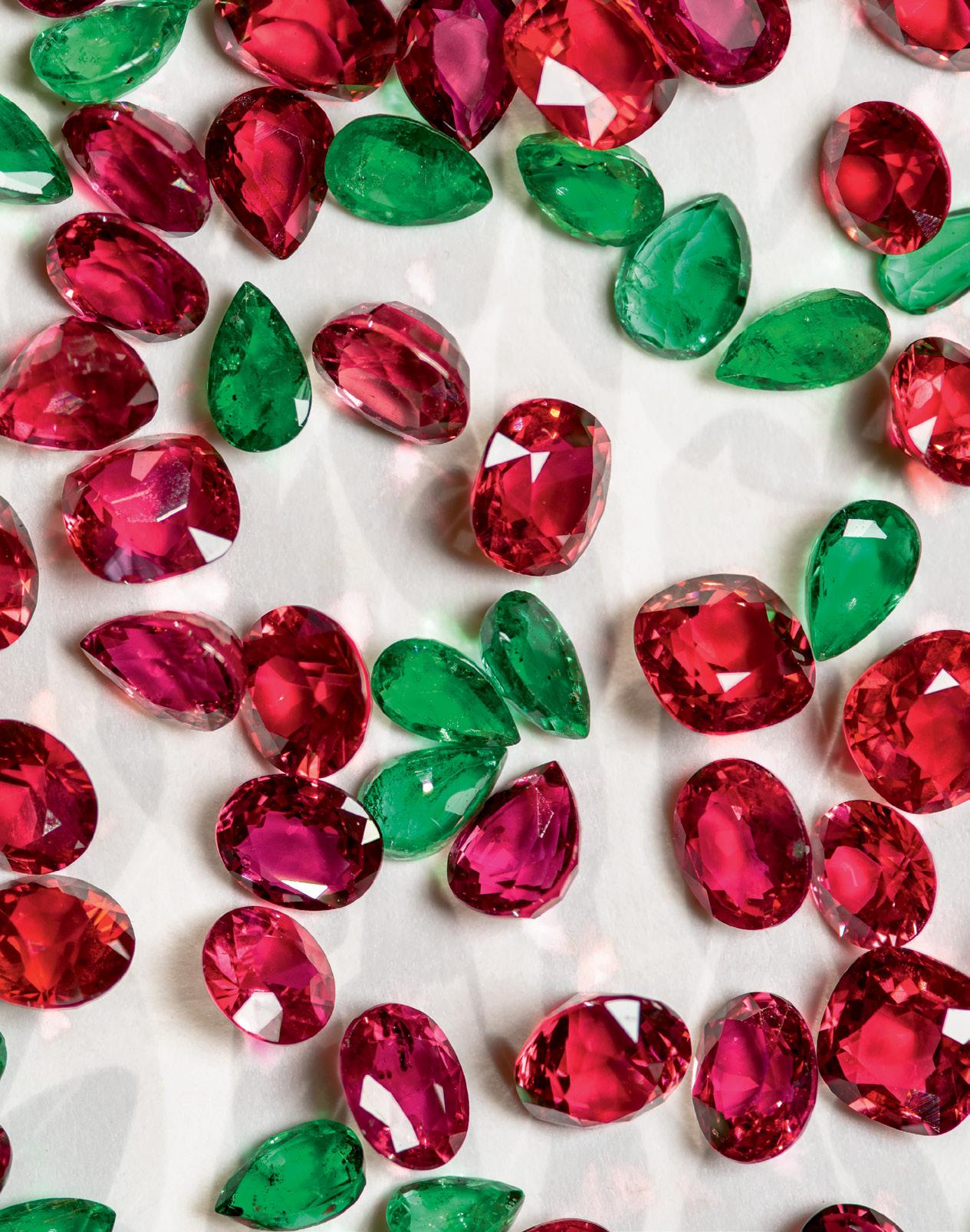

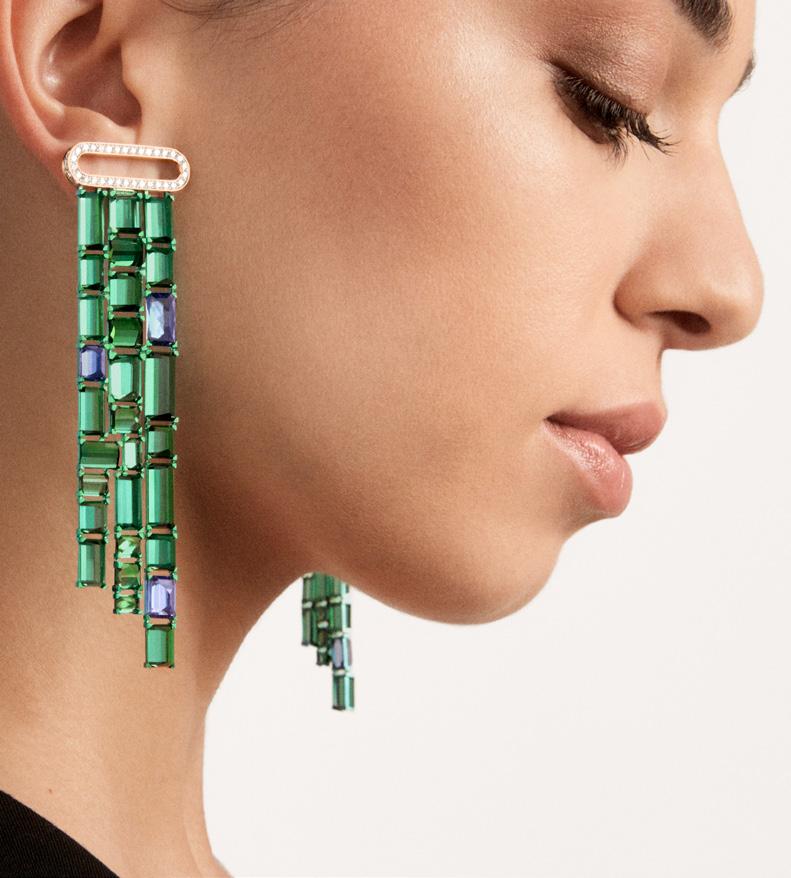




EDITOR IN CHIEF: SONIA ESTHER SOLTANI
NEWS EDITOR: JOSHUA FREEDMAN
SENIOR NEWS REPORTER: LEAH MEIROVICH
SENIOR COPY EDITOR: RACHEL BEITSCH-FELDMAN
COPY EDITOR: NECHAMA VEEDER
ART DIRECTOR: TARDEO AJODHA
SENIOR DESIGNER: DAVID POLAK
DESIGNER: NICOLE BEDNARZ
DATA ANALYST: OREN YANNAI
VICE PRESIDENT OF OPERATIONS: DAVID EHRLICH
PROJECT MANAGER: ANNA SIMAKOVA
SALES OPERATIONS MANAGER: ZOIA KOLTON
SALES AND OPERATIONS
COORDINATOR: YANA SHLYAKMAN
PODCAST AND VIDEO PRODUCER: VANINA PIKHOLC
SOCIAL MEDIA MANAGER: TALY COHN
PUBLISHER: MARTIN RAPAPORT
ASSOCIATE PUBLISHER: LEA SCHIFF

ADVERTISING SALES MANAGER : CHAMUTAL LEVIN
INDIA ADVERTISING SALES MANAGER : NEERAV PATEL
TEL: 91.22.6628.6592
NEERAV.PATEL@RAPAPORT.COM
TO CONTACT EDITORIAL: SONIA ESTHER SOLTANI SONIA.SOLTANI@RAPAPORT.COM
RAPAPORT MAGAZINE AND ONLINE
CONTENT IS PUBLISHED BY RAPAPORT USA INC.
1212 AVENUE OF AMERICAS, SUITE 801 NEW YORK, NY 10036, USA
TEL: 212.354.9100
NY@RAPAPORT.COM
133 EAST WARM SPRINGS ROAD, SUITE 100 LAS VEGAS, NEVADA 89119, USA
TEL: 702.893.9400
INFO@RAPAPORT.COM
RAPAPORT INTERNATIONAL
RAPAPORT BELGIUM
HOVENIERSTRAAT 53, BOX 13
B-2018 ANTWERP, BELGIUM
TEL: 32.3.232.3300
BELGIUM@RAPAPORT.COM
RAPAPORT ISRAEL
TUVAL ST. 21, SUITE 1362
RAMAT GAN 52521, ISRAEL
TEL: 972.3.613.3330
ISRAEL@RAPAPORT.COM
RAPAPORT INDIA
101, THE CAPITAL, PLOT NO C-70, BKC, BANDRA EAST
MUMBAI 400 051, INDIA TEL: 91.22.6628.6500 INDIA@RAPAPORT.COM
RAPAPORT INDIA – SURAT 501-504 C WING, DIAMOND WORLD BUILDING, MINI BAZAAR, MANGADH CHOWK, VARACHHA ROAD

SURAT 395 006, INDIA
TEL: 91.261.672.3300
INDIA@RAPAPORT.COM
RAPAPORT HONG KONG
UNIT 404-405, PROSPEROUS BUILDING 48-52 DES VOEUX ROAD
CENTRAL, HONG KONG, CHINA
TEL: 852.2805.2620
HK@RAPAPORT.COM
RAPAPORT DUBAI
DUBAI DIAMOND EXCHANGE
LEVEL 2, OFFICE D06
ALMAS TOWER, JUMEIRAH LAKE TOWERS
PO BOX 340600, DUBAI, UAE
DUBAI@RAPAPORT.COM







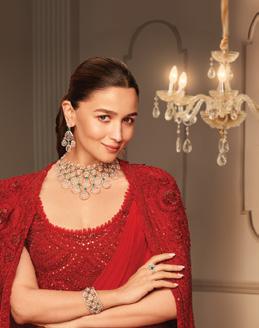



Of all the watch trends to emerge from this year’s Watches and Wonders fair in Geneva, one in particular continues to dominate the conversation: the shrinking size of timepieces. With collectors embracing the return to a more modest case size, I speak to Mark Toulson of Watches of Switzerland Group and vintage expert Eric Wind about the growing appeal of smaller watches and the reasons behind the shift.


With party season just around the corner, I discuss trends, buying plans and jewelry details with six retailers. My article highlights striking pieces to wear through a season of get-togethers, weddings and other events. Rebooted classics and hints of decadence are on everyone’s radar for gifting, while whimsical shapes, big earrings, textured links, and pops of color are quickly gaining ground as fun styling vibes, especially for people with a carefree approach to jewelry.
As with many young women, my first jewels were pearls — such symbols of bourgeois restraint in those days — so it’s been fascinating to watch and record the extraordinary shift in perception and aesthetic. Has any jewel undergone such a radical change in profile as the pearl? My story, “The Pearl Revolution,” shows how designers are having fun with pearls, letting their imaginations run riot and generating avantgarde appeal.
When 28 JAR pieces from a private collection went up for auction at Christie’s Geneva in May, 100% of them found buyers. The same month saw the controversial Christie’s sale of Austrian billionaire Heidi Horten’s jewelry, which exceeded estimates despite publicity about how her first husband, Helmut Horten, had made his fortune in Nazi Germany. In my articles on the subject, I look at how both of these sales underscored the robust health of the top-tier jewelry auction market.
Also in this issue: Anthony DeMarco, Richa Goyal Sikri, Sarah Jordan, Joyce Kauf, Avi Krawitz, Kate Matthams, Adrianne Sanogo, Phyllis Schiller, Rachael Taylor and Isabella Yan


The first half of 2023 has been packed with emotions and new projects for the Rapaport information team. We said goodbye to Senior Analyst Avi Krawitz in June but are delighted that Avi will still be a freelance contributor to Rapaport while he works on new and exciting personal endeavors.
We have also been busy developing our digital home, Rapaport.com, to make sure our community has access to the most relevant news and analyses in a user-friendly environment. Articles from the print magazine — present and past — are readily available online, too.
One of a journalist’s greatest privileges is to give a voice to people and share their stories with an engaged audience. We are doing this on our Rapaport Diamond Podcast, a fortnightly discussion with leading figures in the industry. And we have been steadily expanding to other platforms: We host Instagram Lives spotlighting careers in the industry and exclusive tours of key companies, and we interview emerging designers on our Rapaport Jewelry Pro YouTube channel. Other audiovisual products include a weekly Market Comment video and a quarterly webinar.
In short, we hope we are meeting you where you are — whether it’s in print or
LEFT: I am getting strong dolce vita vibes from these Medium Goccia earrings by Giorgio B, which feature coral enamel and 18-karat rose gold cabochons. Both geometric and sensual, they make a bold statement.


ABOVE: For her Goddess ring capsule collection, Alice Cicolini worked with Parisian illustrator Charlotte Gastaut and Colombian goldsmith Juan Sebastian Galan Bello. The results are mesmerizing jewels in repoussé 18-karat yellow gold, drawing on the energy of Greek and Roman deities. Featured here is the Luna ring, which exquisitely depicts natural elements associated with the moon.









 Katherine Jetter
Katherine Jetter





People shine like diamonds. Like a diamond, they have facets and angles. Perspectives and economic interests they seek to promote and reflect. The best diamonds show brilliance, scintillation and fire as they intensify and integrate light through the reflections of facets. So too with leadership. The role of the leader is to integrate different perspectives and align competing economic interests for the benefit of the common good.
Feriel Zerouki, our esteemed cover personality, is providing leadership across many platforms. Her creation and management of the De Beers GemFair program in Sierra Leone is transformative and highly commendable. Ms. Zerouki plays an important role in our industry as the De Beers senior vice president for corporate affairs and has extended her influence as president of the World Diamond Council (WDC), honorary treasurer and member of the Responsible Jewellery Council (RJC) executive committee, and most recently as a director of the Jewelers Vigilance Committee (JVC).
It is important to recognize Ms. Zerouki for the leader she is and to learn about her views. Ms. Zerouki and I strongly disagree about a number of critical industry issues, such as the relationship
of the diamond trade within the Kimberley Process (KP) and the WDC System of Warranties. Whatever our differences, the role of Rapaport Magazine and Rapaport information services must be to honestly communicate the diversity of views within our industry, even and especially those views that we may strongly disagree with.
Ms. Zerouki, De Beers, the WDC, the RJC and the JVC will face serious unprecedented challenges over the next few months and years. Synthetics, sanctions, and the bifurcation of the diamond trade as we enter a global economic world war will demand attention. It will be interesting to see how the current industry leadership confronts these challenges.
Leadership will require the merging of different perspectives and economic interests for the common good. It will also require the exclusion of unethical members of the industry from trade organizations. Ms. Zerouki seeks to be all-inclusive, but she cannot be everything to everyone everywhere. Tough decisions lie ahead.
As the Rapaport Group enters its 46th year of publishing diamond prices, we devote ourselves to promoting better communication and the exchange of ideas that can help the diamond industry grow and prosper.
Lab-grown stones and the industry’s most important sales contract dominated the last two months of news in the diamond world.
Results at Richemont pointed to a possible high-end slowdown in the US. Sales at jewelers Cartier, Van Cleef & Arpels, and Buccellati were “broadly flat” in the Americas during the third fiscal quarter, which ended June 30, the company said. Their global revenues rose 19% year on year to EUR 3.6 billion ($4.04 billion) due to a rebound in Asia.
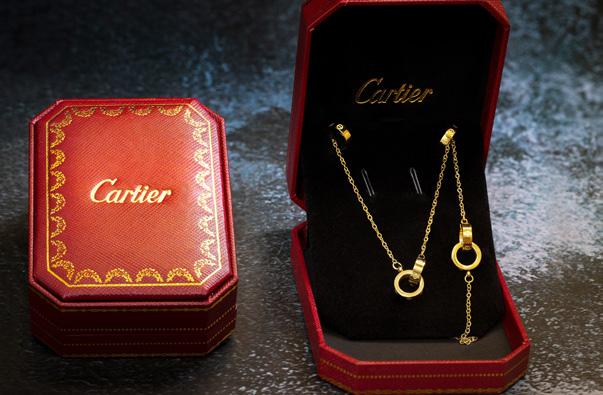
De Beers and Botswana have finally agreed on a deal for the extraction and sale of the country’s rough diamonds. State-owned Okavango Diamond Company will initially gain access to 30% of production from Debswana, the joint mining venture between De Beers and the Botswana government. That share will grow to 50% over the course of the 10-year contract.

Russia’s diamond trade declined but managed to avoid a heavy collapse last year after Western sanctions had only a limited impact on the sector. The country’s rough exports slid 24% to 36.7 million carats in 2022 and fell 4% by value to $3.87 billion, according to data the Kimberley Process (KP) released in June.

This 7.5-carat lab-grown diamond entered the spotlight in June when Indian Prime Minister Narendra Modi gifted it to US First Lady Jill Biden on a state visit. Indian Commerce and Industry Minister Piyush Goyal touted the F-color, VVS2-clarity stone’s “eco-friendly” origins, as producer Greenlab uses only renewable energy at its Surat factory.

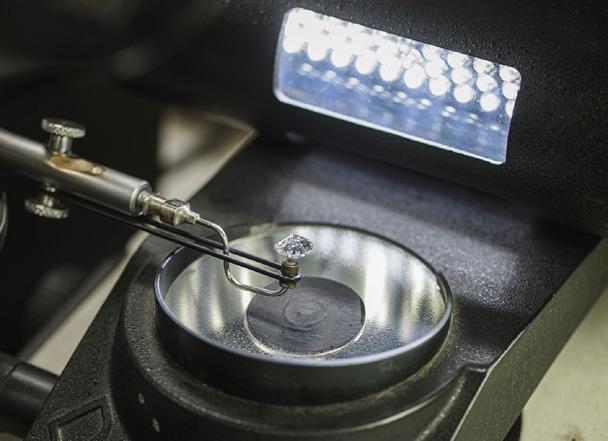
De Beers’ lab-grown brand, Lightbox, launched sales of engagement rings featuring stones of up to 2 carats. This led some in the industry to suspect the miner was rolling back its previous claim that synthetic diamonds were solely for fun fashion jewelry.



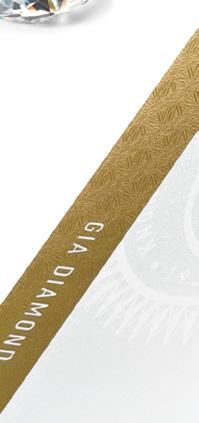











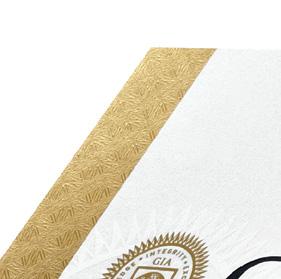


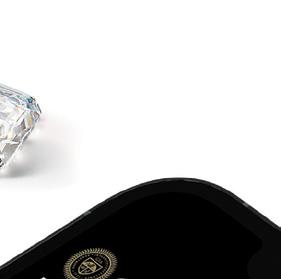








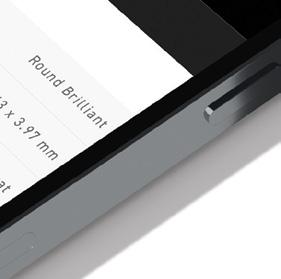









Accurately screen out simulants, synthetics and treated stones.
Ignite’s leading-edge instruments used in combination, significantly reduces the number of diamonds that require time-consuming laboratory testing.





VISIT DE BEERS GROUP IGNITE AT IIJS 2023, MUMBAI, 3-8 AUGUST 2023








Ignite is a leading innovation, science and technology division of De Beers Group. Through continuous research, development and innovation, our advanced suite of detection and verification instruments provide consistent and accurate screening results.





Industry professionals have long maintained that the only way to transform diamond traceability and transparency is to have everyone march to the beat of the same drum.
De Beers Group recognized this in June when it opened up its Tracr digital diamond-tracking platform to industrywide participation. Before that, it had been a De Beers flagship, drawing on blockchain technology to log diamonds at the company’s global mining sites and follow them through the value chain. Now, high-profile participants include the Gemological Institute of America (GIA), Gemological Science International (GSI) and diamond jewelry retailer Brilliant Earth.
“We believe the diamond industry is desperate for a way to tell the rich story of natural diamonds at the point of sale,” says Tracr CEO Wes Tucker. “This requires a trusted, scalable digital solution where every actor in the value chain can share their part of this journey, from discovery to sale.”
Different companies throughout the diamond pipeline will use the Tracr platform differently. When rough sells to a manufacturer, the manufacturer takes ownership of the diamond’s tamper-proof “digital fingerprint,” according to Tracr, and can then add information and images about the cutting and polishing process
to the blockchain. Retailers, meanwhile, can look up any diamond in their inventory by its Tracr ID and use the interactive Tracr Diamond Experience tool to show customers the full history of the stone they’re buying.
All aboard
That said, the size, scale and influence of the newly publicized Tracr participants have led some to wonder how suitable the platform is for smaller businesses with fewer resources. De Beers is quick to address this issue.
“[Tracr’s] ultimate ambition is to support the entirety of the diamond industry, from the smallest miners all the way through to the largest,” a company spokesperson tells Rapaport Magazine.
While large luxury brands may use the platform to build ethical assurances into their supply chains, online retailers may employ it to enhance their digital storytelling or as a third-party tool in the sales consultation process.
As for the GIA, it sees its participation in Tracr as a service it can offer its business-to-business (B2B) clients to help boost consumer confidence.
“When a diamond that has been traced from the source is submitted to the GIA for grading, it will have a Tracr ID, which will allow the GIA to match the polished stone to [its] Tracr record,” explains Pritesh Patel, the institute’s senior vice president and chief operating
officer. “At a time when this information is more important than ever, Tracr has come forward with an industry solution that we are hopeful will attract more participants.”
At the time of this writing, De Beers has registered more than half of its production by value on Tracr, representing more than 1.3 million rough diamonds at the mining level and 110,000 at the manufacturer level. The group recognizes, however, that Tracr will only become an industry-wide tool if it can move beyond De Beers’ own supply. Onboarding competitor producers is the logical next step, and the miner has purposefully designed and tested the platform to achieve this.
If tempting other mining companies into the fold is the long game, Tracr’s short-term focus is on the other end of the supply chain: consumer-facing brands that can market the authentic provenance story behind their Tracrregistered stock. Tracr is also reportedly developing ways for consumers to add info to the blockchain themselves.
If shoppers begin opting for Tracr diamonds over their blockchain-free counterparts, more diamond businesses will have an incentive to participate in the program. This purchasing power will determine the Tracr landscape in the decades to come.
Now
platform is open to the entire industry, the next step is to get more brands and miners to sign on. By Sarah Jordan
The recent State of the Art Jewelry Summit at Harvard brought key sustainability issues to the fore.


 By Adrianne Sanogo
By Adrianne Sanogo
Ethics and sustainability were among the main topics of conversation at the inaugural State of the Art Jewelry Summit, which took place in June at Harvard University’s Mineralogical and Geological Museum (MGMH). The event brought together academics, industry experts, visionaries, and an audience that spanned multiple disciplines to discuss the latest research, technology, business and art developments in the jewelry world.

The African view
To kick off the conference, keynote speaker Dan Schrag shared a startling fact about CO2 emissions. While the US, Europe and China are the biggest emitters, one might assume that Africa, with its abundance of mining operations, is near the top as well. However, the continent is actually responsible for less than 4%, according to Schrag, an environmental science and engineering professor at Harvard. Panelist Monica Stephenson offered a similar stat, but also a warning. “Sub-Saharan Africa is responsible for less than 3% of total emissions, but I have seen firsthand that the artisanal miners and communities there will bear the brunt of the damage from climate change,” said the founder of gem supplier Anza Gems, which works to benefit those communities.
One African success story that came up was Botswana. The country “utilized diamonds mined there to transform its economy,” jewelry designer Thelma West noted on a separate panel. She commended Botswana for this accomplishment and suggested that the nation should receive more recognition for it.

Working together
Cohosting the summit were Responsible Jewellery Council (RJC) executive director Melanie Grant, Gemological Institute of America (GIA) CEO Susan Jacques, and MGMH curatrix Raquel Alonso-Perez.

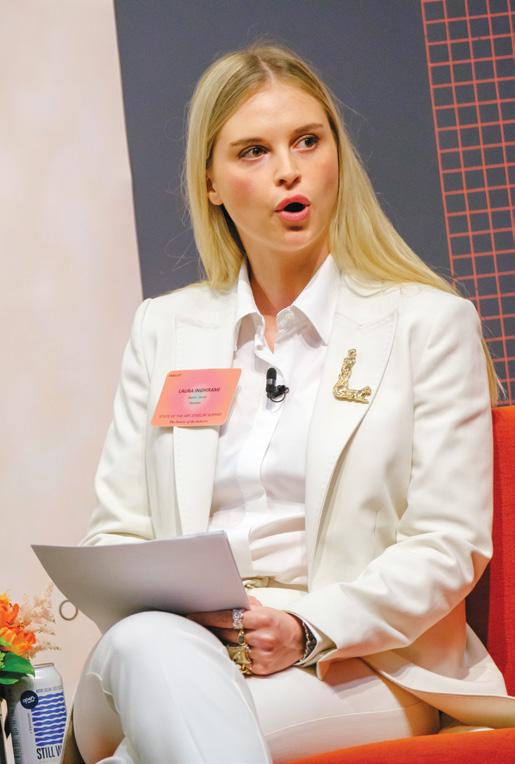
The RJC in particular addressed environmental, social and governance (ESG) issues, using the event to launch its “ESG Toolkit.” The document, which aims to help jewelry businesses improve their sustainability practices, outlines practical steps for putting together an ESG report that will comply with global standards.
One thing that became clear during the gathering was the importance of working together and pooling resources. “The exchange of ideas, knowledge and culture is fundamental for the advancement of the worldwide industry,” declared panelist Laura Inghirami, founder of branding consultancy Donna Jewel. Others highlighted the power of a single person to inspire change. In his closing remarks, MGMH director and Harvard professor Charles Langmuir recounted how he’d once followed someone’s lead and ordered a coffee without a plastic lid. One individual’s small decision could influence 100 people, he stressed, and those people could then influence 1,000, creating a ripple effect that could have a far-reaching positive impact.
AVAILABLE NOW TO SELECT JEWELERS



this one by research firm Return on Disability — describes people with disabilities as “an emerging market the size of China [and] the European Union [combined],” with 1.85 billion people globally who account for $1.9 trillion in annual disposable income. Add in family and friends who might buy products for them, and the numbers get even higher.
At the JCK Las Vegas show in June, Tiffany Yu made a striking statement. “We, as disabled people, actually control about $21 billion of discretionary income, which is more than the Black [$3 billion] and Latinx [$16 billion] markets combined,” said the founder of Diversability, a social enterprise that advocates for young people with disabilities.
These figures come from a 2018 study by the American Institutes of Research that points to the “significant and growing economic power of the disability market.” Another recent study —



Yu, who has paralysis in one arm due to a car accident when she was a child, was speaking at the Women’s Jewelry Association (WJA) Generating Community Impact Breakfast. Her statement was enough to pique interest in the room, which contained many C-suite jewelry executives. She also gave a live demonstration of how difficult it was for her to put on traditionally designed jewelry; for someone with the use of only one arm, she noted, clasps are particularly challenging.
People with disabilities have had little representation in the jewelry world, but activists in the industry hope to change that — and open up new business opportunities in the process.
By Rachael Taylor
The other speaker at the breakfast was Molly Kettle, chief operating officer at talent agency Gamut, which represents people with disabilities who are in the public eye — including Yu — and works to connect brands with the disabled community. Kettle posed some challenging questions to the audience. What were they doing to sell to people with disabilities, she asked, and how were they making workplaces more inclusive for employees with disabilities?
These conversations need to happen more in the jewelry industry, believes WJA executive director Jennifer Markas, who organized the JCK talk. People with disabilities are not well represented, she says. “How many people do you see on a retail floor in wheelchairs?”
She points to diamond dealer André Messika, who has a child with disabilities, as doing great work to highlight inclusionary job environments. Messika actively employs people with disabilities at his cutting and polishing factory in Windhoek, Namibia. Generally, though, disability inclusion “has never been spoken about at scale” in the jewelry industry, Markas states.
By connecting the audience at JCK not just with the human experience of feeling excluded in the jewelry world, but also with a potential business opportunity, Markas hopes to open some minds.
“That’s really why we had the two speakers,” she says. “We knew that if Tiffany spoke, it would be like, ‘Oh, that’s nice, interesting.’ But the minute Molly was talking about the business case and how you could be a leader in this and set the stage for what adaptive jewelry is, I think [many people] were like, ‘Oh wow, this isn’t just something that we’re talking about, this is something I should actually explore.’”
And as Kettle pointed out at JCK, adaptable collections don’t just benefit those born with disabilities: “If we’re all lucky enough to age, we will probably join the disability community at some stage in our life.”
Seeing the potential, some jewelry companies are already paying attention to this potentially lucrative market. A number of major luxury brands have accessible collections in development that will likely launch in the next couple of years, bringing the industry that much closer to welcoming and accommodating all jewelry lovers.
Mariana Russo Chambers was scrolling through Instagram one day in 2021 when she stumbled across the account of Stephanie Thomas — a stylist for people with disabilities, and a congenital amputee born with missing digits. Russo Chambers, founder of New York jewelry brand Cut + Clarity, connected instantly with Thomas’s story and reached out to her. A friendship developed, and a year later, the pair collaborated on a line of adaptive jewelry called Disabled + Stylish.
Using the patented Accessible, Smart, Fashionable system that Thomas’s Cur8able styling consultancy had developed, “we thought about ways to make jewelry with the disabled community front and center,” relates Russo Chambers. “The disabled community is not a monolith; it would be impossible to design for all types of disabilities. So we took Stephanie’s difficulty in dressing herself and her clients — because she is missing a thumb — as our primary focus.”
They didn’t want anything too dainty for people with motorfunction issues to manage, so they replaced lobster clasps with sliding-ball clasps, and sized their chains to slip over the head. Thomas “challenged me to design a hand chain that she could put on easily,” recalls Russo Chambers, “and after many iterations, our Accessible Handchain was born and became our best seller.”
Disabled + Stylish is a permanent collection at Cut + Clarity, with new designs added periodically. Russo Chambers believes more jewelers should be looking into adaptive design. “Working with Stephanie has changed how I look at fashion, jewelry design, and the industry as a whole,” she says. “According to [the Centers for Disease Control and Prevention (CDC)], one in four adults in the US is living with a disability, but very few brands are addressing their needs. I am proud not to be part of that herd.”

When estate dealers
Thomas Faerberand Ronny Totah launched GemGenève in May 2018, they aimed to create the perfect antidote to the declining Baselworld watch fair: an intimate show, organized by the trade for the trade, that would offer every sector of the industry the attention it deserved. This applied equally to diamonds and gemstones, vintage jewelry, labs, and emerging designers.
The sixth edition of the fair, which took place in Geneva from May 11 to 14, cemented its status as an unmissable stop on the European trade-show circuit. The organizers recorded 4,320 visitors, 1,400 of whom attended more than once, bringing the total number of visits to 6,487 — an increase of more than 1,000 from the November 2022 event.

“We’re proud that with this most recent edition, GemGenève has now become an established part of the cultural fabric of Geneva and the international scene,” said Totah.
Exhibitors reported steady traffic and positive sentiment during the four-day event, with Thursday and Friday being particularly strong. Some conducted successful business transactions during the VIP preview the Wednesday afternoon before the show. Buyers included international retailers, leading jewelry houses, collectors and private buyers. The big brands’ colored-stone and diamond-buying teams could be seen systematically walking the aisles.
Kunal Shah, president of New Yorkbased diamond company Pristine Gems, didn’t exhibit at the show but visited
because he saw it as a good place to get a feel for the current demand and pricing.
“The show is more focused toward the brands, so the product offering is top-shelf,” said Shah, whose company specializes in the high-end market. “Prices tend to be in line with that specific clientele.”
Another company that didn’t have a booth but attended the Geneva event was Indian diamond manufacturer Dimexon. After a lukewarm beginning to the year, the “real sense of positivity at GemGenève” offered hope for a more robust second half, said company director Vishal Mehta.
His trip to Geneva was a successful one, he related. “There was strong interest demonstrated at the show for exceptional diamonds, and we were part of some encouraging discussions regarding potential business for the
remainder of the year for certified and melee diamonds. For exceptional colored gemstones, we understand that there was strong demand, with successful transactions executed at the show.”
Returning exhibitor Harsh Maheshwari, executive director of Kunming Diamonds, concurred that the overall sentiment at the show was positive. However, this year’s edition didn’t live up to last year’s results. “We
had a very busy first two days of the show, and overall had a few good sales,” he reported. “But both the GemGenèves last year were better for us.”
This was a reflection of the general market, rather than a criticism of the show, added Maheshwari, who specializes in fancy-colored diamonds. His conversations and transactions with clients and peers signaled that the middle to ultra-high-end segments would only see a drop in demand, not in prices.


“Fancy colors have always been a rare specimen, and with even more shortage of supply, we will maintain a decent year
ahead, just not as exceptional as the last two years,” he said.
With GemGenève becoming a biannual event — the next show is planned for November 2 to 5 — exhibitors will have another opportunity this year to gauge the health of the market. The organizers added the second edition in 2022 at the exhibitors’ request because trade fairs were not going ahead in Asia at the time.

The reintroduction of the Hong Kong shows might affect the Geneva event, remarked co-organizer Nadège Totah, Totah’s daughter, in an interview for

the event’s in-house publication. “If all the exhibitors have a very good show in Hong Kong, we will discuss with them whether it makes sense to come back a month later with the same goods and the same buyers. We have the flexibility to be able to cancel or postpone even at very short notice.”
She also said the show might consider having editions in Dubai or Singapore, though she ruled out the US because regulations made it more challenging.
Back in 2018, GemGenève hosted 147 exhibitors, including 120 dealers. In May, 192 professional dealers out of 230 total exhibitors showcased at Geneva’s Palexpo — the highest number the organizers have ever agreed to host. While they aim to keep the fair a friendly size, the growth speaks for itself.
“The show is more focused toward the brands, so the product offering is top-shelf. Prices tend to be in line with that clientele”
Every two weeks, the Rapaport team releases a new episode of the Diamond Podcast. Check out the four most recent episodes as of press time.
US restrictions on Russian goods will likely tighten to reflect the actual behavior of jewelers and the public, according to Tiffany Stevens, CEO, president and general counsel of the Jewelers Vigilance Committee (JVC).

Many consumers and industry members have refused to buy Russian diamonds since the start of the war with Ukraine in February 2022 — even when the stones were technically legal because they had undergone manufacturing in another country.
In other topics, the industry has expressed its opposition to the word “recycled” as a descriptor of metals or jewelry, Stevens revealed in the June episode. These views emerged during the process of submitting recommendations to the Federal Trade Commission (FTC) for its new Green Guides, which deal with environmental claims.
“I am impressed with how seriously people [from the trade sector] are coping with the sanctions. Everyone seems to be doing everything that they can. Most of them are hungry for more direction and clarity from the government.”
Tiffany StevensThe big news on this podcast was from the Rapaport Group itself: Senior Analyst Avi Krawitz’s departure from the company after 16 years of service. Wiping away the tears, the editorial team fired questions at Krawitz: What were his plans for day one post-Rapaport? Had the industry ever disappointed him? And what was the job like when he started in 2007?
Krawitz has become known for his thought-leading analyses in the monthly Rapaport Research Report, his insightful webinars, and his gripping interviews on this very podcast — along with being an all-around nice guy. His interrogators were Rapaport Editor in Chief Sonia Esther Soltani, Senior News Reporter Leah Meirovich, and News Editor Joshua Freedman.
“I do remember very clearly my interview at Rapaport… I remember being taken aback, [thinking] wow, this is a company that is kind of eccentric and interesting. And [this is] an industry that is eccentric and interesting, so I might be a good fit for it. And that gut feeling was correct.”
Avi KrawitzThe market is seeing a spate of green diamonds coming back from grading labs as treated, according to Thomas Hainschwang, cofounder of GGTL Laboratories.
In his conversation with News Editor Joshua Freedman, he also discussed the latest issues in grading, his views on synthetic diamonds, and whether one could use technology to identify a stone’s origin.
“Synthetic diamonds being in competition with natural reminds me of the stories of when synthetic rubies were grown. People were freaking out, and look at the ruby market today.
Synthetic ruby is in cheap jewelry, and natural rubies are more expensive than ever.”
Thomas Hainschwang

In this episode, Amish Shah, founder of Altr Created Diamonds, came on to discuss the inaugural Lab-Grown Diamond Symposium, which took place in Dubai on July 10. Industry members met to debate the economics and marketing of synthetic diamonds, as well as issues like sustainability.
On the podcast, Shah — a panelist at the event — described the gathering’s relaxed atmosphere and gave his views on the latest lab-grown news, from De Beers’ engagement-ring launch to reports of a price slump.

“One aspect of sustainability is climate action, but sustainability is built on a variety of pillars, from doing good for your employees, to HR people, to water conservation. So let’s focus as an industry on all the various things we can do instead of going after one piece of the puzzle.”
Amish ShahThe Rapaport Diamond Podcast is available on Google Podcasts, Apple Podcasts, Spotify and YouTube. Find out more about older episodes at rapaport.com/type/podcasts

Feriel Zerouki has a clear vision for her term as World Diamond Council president: to make the trade body more accessible, and to heighten awareness of responsible-sourcing issues. By
Avi Krawitzoaming the halls of diamond conferences and industry meetings, Feriel Zerouki stands out from the crowd. Aside from being one of only a few women in the room, the new president of the World Diamond Council (WDC) has made a habit of pushing the industry’s boundaries.
“When I first met the different trade associations, I may have ruffled a few feathers,” she remarks in an interview with Rapaport Magazine. “I walked in without any expectations, full of questions and with a very strong opinion.”
At the time, she explains, they were discussing the same old topics, predictably relating to De Beers supply and the banking sector. “I’d point out to say, surely we’ve moved on,” recalls Zerouki. Drawing on her work at De Beers — where she is now senior vice president of corporate affairs — she saw other major issues the trade needed to address, namely responsible sourcing, sustainability and human rights.
Today, she acknowledges, the industry has moved on, even if it faces many new challenges.
As the first woman to head an international diamond trade body, Zerouki “feels welcome, accepted and respected” in her role. Having begun her two-year term in May, she expects her experience will help evolve the diversity dynamic within trade associations.
“Others won’t face the same challenges I did, because we’ve tackled them already,” she asserts. “I’m looking forward to getting more diversity into these trade organizations — more women and other cultures — and I’m thinking about how to do that.”
Historically, industry members needed a seat on a WDC board in order to make themselves heard, but the council is considering other ways that newcomers can offer their opinions. Under previous president Edward Asscher, the body changed its bylaws to allow more people to participate in its committees. By making itself accessible to a broader audience, Zerouki believes, the council can better educate people about challenges facing the industry, the role of the Kimberley Process (KP), and that of the WDC itself.
The WDC serves two main functions, she explains: It represents the industry at the KP, and it manages the System
of Warranties (SoW), through which businesses can provide assurances about their diamond sources.
It recently updated the SoW to include business practices relating to human and labor rights, anti-money laundering, and anti-corruption. The WDC also introduced a self-assessment mechanism to ensure that participants were meeting the stated standards.
However, it is within the corridors of the KP that the WDC exerts its biggest influence. That’s no simple feat, given that unlike governments, it has no voting power there — only observer status.
Zerouki dismisses assertions that the KP has lost its relevance, stressing that no one else can fulfill its important task of controlling rough diamonds’ movement across borders. However, she acknowledges that it falls short when it comes to broader social concerns in the supply chain.
“Is [the KP] sufficient to address all issues? It never was,” she says. The WDC has been working to incorporate those issues into the definition of “conflict diamond,” which is currently limited to diamonds that fund civil wars. The council’s updates to the SoW have provided an example of what a responsible-sourcing declaration can look like for rough diamonds, she adds.
Meanwhile, the WDC has gradually gained trust at the KP, which has given the council greater influence in discussions, she reports. The KP, which Zimbabwe currently chairs, has asked the WDC to take the lead in meetings pertaining to the definition change.
But while the conflict-diamond definition and other “big issues” create headlines, there are many smaller wins at the KP, according to Zerouki. The organization has multiple working groups making technical decisions that affect the industry daily — and then “there is the really important work being done at the KP on artisanal mining, that no one wants to write about.”
“When I first met the different trade associations, I may have ruffled a few feathers. I walked in without any expectations, full of questions and with a very strong opinion”
On top of all that, the war in Ukraine has prompted greater scrutiny of the industry’s sourcing practices. The Group of Seven (G7) nations — Canada, France, Germany, Italy, Japan, the UK and the US — have been working on requiring diamond companies to declare their goods’ origins at customs to ensure they are not contributing to Russia’s war effort. Here, Zerouki strikes a cautious tone.
“I’m really worried about the informal sector,” she says, referring to both artisanal miners and the independent artisans and traders — primarily in India — that the trade calls “the cottage industry.”
The G7 requirements won’t discriminate between the formal and informal sectors, as all diamonds will need to comply, she explains. This poses a challenge, because much of the industry does business by aggregating or mixing goods from various sources. This is especially true of the cottage industry, which has never sorted its diamonds by provenance, she argues. “They can do it, but it will require training and developing systems that bring them along.”
Zerouki is aware that the scope of these industry issues is daunting and that the work the KP and WDC are doing is often misunderstood. In her role as WDC president, she aims to change that, and to ensure no one is left behind.
“The industry isn’t aware of all these things, which is partly because we never communicated it strongly,” she admits. “I want to use my presidency to bring that outside world in and make them understand how critically important these issues are for the future of our industry.”
Feriel Zerouki’s emergence as a leader in diamond-industry policy was unplanned, but it was also unsurprising.
Born in the United Arab Emirates and of Algerian heritage, Zerouki is a trained mathematician. She joined De Beers as a supply chain analyst, developing models to measure whether the company could deliver on its supply commitments.
She moved from forecasting to pricing, but soon got “an itch” to understand the rest of the diamond pipeline and interact with the broader industry, she recalls. “I had my education, but I also have my personality.”
A position opened up within De Beers to work on the company’s Best Practice Principles (BPPs), which were in their early development stages. Compliance issues were new to the diamond trade at the time, pushing Zerouki to learn the supply chain and develop standards “based on common sense” and what other industries were doing.
The BPPs continued to evolve. Meanwhile, there was a need for guidelines that the broader industry could adopt. De Beers cofounded the Responsible Jewellery Council (RJC), with Zerouki participating in the standards committee.

Today, at 41, she has built a reputation as an expert on industry compliance. In addition to her role at the WDC, she sits on the boards of both the RJC and the Jewelers Vigilance Committee (JVC), which provides legal and compliance guidance to the jewelry trade.
All of this is a far cry from her days as a supply chain analyst — and Zerouki revels in the direction her career has taken.
“I love mathematics because it’s black or white, but the issues we deal with are very complex,” she reflects. “I’m good at the technical stuff, and that gives me an advantage.”
Her expertise makes it easier to convey these issues to others in the trade who might otherwise be resistant, “because people block things they don’t understand or that they fear.”
Fostering that understanding “gets you a long way,” she says, and “I do love the engagement with people.”

What are the must-have jewelry styles for your store shelves this holiday season? Six retailers share their buying plans.

Twist: Everything gold, wearable modern looks, and lots of charms Paul Schneider, cofounder of Twist, is planning his store’s holiday buys right now, and those will primarily be gold. The retailer’s top designers haven’t changed much over the past several years; pieces by Cathy Waterman and Foundrae are on everyone’s radar, and some fun styling choices include modern, wearable pieces in gold and diamonds by Anita Ko and Viltier.
“We have worked with Anita Ko since she started, and it’s an important part of our business,” relates Schneider, whose company has boutiques in Seattle, Washington, and Portland, Oregon. “Viltier from Paris is a new line, and we have been selling their earrings really well.”
Customers can stay tuned for shiny new offerings from Boochier and Sophie d’Agon, large gemmy rings from Retrouvai, and bright, colorful designs from Jamie Joseph, Anaconda, and Brooke Gregson. Colored-stone and gold pieces by Mallary Marks, Ten Thousand Things, Kothari, and Judy Geib have a devout following, as emeralds, sapphires and turquoise continue to cast their spell.
Charms are difficult to resist, and the more, the merrier. Clients love them strung in groups along necklaces, as well as on bracelets and earrings.
Twist always sells a wide range of styles from multiple designers, with prices starting at $500 and the sweet spot balanced between $3,000 and $6,000, according to Schneider.
By Smitha SadanandanSelf-purchasing has been “continually growing,” he adds, and the price range “has been inching higher every year.”
Be On Park: Rivière necklaces, cocktail rings and vibrant drops
Emily Dowling Williams, owner of Be On Park in Winter Park, Florida, is focusing on strategic buying ahead of the busy holiday season, when clients have a perfect excuse to splurge on precious gifts. Self-purchasers hover around $2,500 to $5,000, while holiday gift-buyers usually spend between $10,000 and $20,000.
That said, “the sky’s the limit, depending on the customer,” according to Williams. Shopping
during this time of year can be pretty dramatic: “We could have someone walk into our store and spend $150,000 on Christmas eve.”
Williams’s must-haves include classics — rivière necklaces, line bracelets and diamond studs — and bright drop earrings in pretty designs and a range of prices. Vibrant drops by Lauren K are a holiday staple here.
Some men happily shop for contemporary jewelry, taking cues from their wives. Others, however, mosey into the familiar territory of rivière necklaces and tennis bracelets. When buying for themselves, women often turn to uplifting pieces and new designers. “They think outside the box; they are a little bit

more independent and a little bit trendier,” says Williams.
Be On Park is bringing in new looks from Paul Morelli and Jenna Blake in time for the holiday madness. The store will also be hosting trunk shows during the season, with Lauren K, Sethi Couture, and Penny Preville among the featured brands.
New York diamond jeweler Kwiat, unarguably the store’s “banner holiday designer,” has a great fashion line and a breadth of easy-to-wear pieces, with prices running from $1,500 to $200,000. Its signature Ashoka-cut diamonds, Starry Night series, and classics with a Kwiat twist get replenished at the store throughout the year.
Williams, who sports a ring on every finger, has amped up her store’s ring game for selfpurchasers. “Perhaps it gives people permission to stack it up,” she muses — which is why Emily P. Wheeler’s bright cocktail rings fit nicely into this wheelhouse.
Few jewels have the impact of a great stack of bangles, especially the easy-to-wear hinged
“We continue to see a strong interest in yellow gold, although for the first time in years, there is an uptick in interest for white gold”
versions. Sparkly diamond, single-color or fancier ombre bangles are perfect for a great wrist party. Layering up bezel-set rivière necklaces, meanwhile, makes for a contemporary take on laid-back luxe. “A bezel-set necklace plays well with a fun [bead-strand] necklace,” Williams says.
Hamilton Jewelers: Elevated classics, stackables, and stretchable bangles
This holiday season, Hamilton Jewelers — with its flagship boutique in Princeton, New Jersey, and outposts in Florida — is seeking out best-selling silhouettes that are highly giftable. These include diamond tennis bracelets, studs and rivière necklaces, alongside such elevated gold classics as hoops, chunky chains, and bangles — all of which executive vice president Anne Russell saw in abundance at the latest Las Vegas jewelry shows.
“We also get to play around a bit more with colored gemstones, which is always fun for our clients when they are on the party circuit,” says Russell.
Another category that does well is diamond stretch bracelets. These come in myriad sizes and materials and are ideal for layering, she says. “We see this item flying out the door for both giftgiving and self-purchasers.”
The core focus is on everyday elegance across all categories, be they modern or traditional. On the high end, Russell usually sees an uptick in the company’s Private Reserve collection at this time of year, from rare Colombian emerald cocktail rings to megawatt diamond earrings. Layering is the most nonchalant way to amplify such sparklers as the party season approaches. With the unwaning interest in multiple neckpieces and stackable rings, creations by David Yurman, Pomellato, Temple St. Clair, and Dinh Van never fail to find takers.
At CD Peacock in Chicago, Illinois, the moment calls for individual style. There isn’t a dominant trend of layering or statement pieces like in seasons
past, reports Chelsea Holtzman Lawrence, the jeweler’s vice president of marketing and communications; it’s all about “what makes our clients feel their best.”
The stacked wrist is back in a bold way with three, five or even seven bracelets. Customers are creating their own looks by combining different designs — such as a link chain with a bold gold cuff and a diamond tennis bracelet — or mixing metals and colorways in their stacks, Holtzman Lawrence says. Roberto Coin has some incredible link-style options to play with.
Traditional gems like sapphires and emeralds remain prevalent, but unexpected pops of color in the form of stones such as pink and yellow sapphires, opals, and tourmalines are also showing up everywhere. CD Peacock finds clients choosing rainbow styles; a single piece that offers a range of color is money well spent. Length and movement are also important, and what better way to make a holiday statement than with a gorgeous diamond lariat or a pair of linear drops? “Anita Ko leads the way in this trend and once again incorporates gemstone touches with diamonds,” says Holtzman Lawrence.
Sentimental jewels are all the rage for gifting this year. The store prices classic pieces — birthstones, medallions, evocative motifs, and initial and engraved pendants — from about

And it’s not just women who get shiny gifts. For men, chains and layered-wrist styles are still in vogue. Links in varied textures and forms — such as Cuban, Franco and wheat — continue to dominate the gift category and are available for under $3,000. These include handmade chains from Fope that come in 18-karat white, yellow or rose gold. Beyond that, observes Holtzman Lawrence, “men are expressing their personal style by incorporating strands of pearls and diamonds into their everyday look.”
Reinhold: Whimsical, nature-inspired designs and large earrings
When in doubt, Yael Reinhold recommends seeking out colorful designs. You can never go wrong with



collection and classic gemstone earrings by Jane Taylor will be part of the line-up as well, and no party is complete without a Yeprem ear cuff, Reinhold maintains.
Her team has handpicked one-of-a-kind jewelry for well-traveled clients, including the distinctive creations of Sevan Bıçakçı, which take inspiration from myth and the ancient world. Diamonds will also shine and wink from delightful new works by Lizzie Mandler, Hoorsenbuhs, and Mason and Books.
Zachary’s Jewelers: Textured links, bezel settings and bold gold For Constance Polamalu, chief operating officer at Zachary’s Jewelers, holiday trends veer toward strikingly individual designs and appealing collections. The new favorite at the Maryland-based store is the Jaipur series from Marco Bicego; the Jaipur Link line, with its gold and diamond chain styles, has been resonating strongly with customers who seek a carefree approach to jewelry.
The unmistakable shift toward “bolder gold looks over the last few years” is bound to make its presence felt this holiday season, says Polamalu, even though her store’s market “is typically more cautious in trend chasing.” Heavier necklaces and bracelets are turning into trend definers. If you’re
looking to dial up the splendor, fancy-colored diamonds and pastel gems might just do the trick.


“Two-stone rings in all varieties are and will continue to be immensely popular,” she says. For clients who want something made to order, the store can turn to jewelry manufacturer Stuller or custom designer David Rovinsky for creative assistance. Zachary’s also does its own custom combinations for those keen on a particular color, cut or type of gem.
For holiday-ready styles, rings featuring double trillion-cut fancy-yellow diamonds, pink sapphires, and tourmalines would be fabulous choices. Station necklaces, bracelets and pendants echo the spirit of elegant festive accessory, and personalizing the jewels with engraved messages makes the gift all the more endearing.
Observing a renewed interest in bezel settings, Polamalu has expanded the store’s offering with variations like the signature “cuddle” settings from Phillips House, in which a seamless row of stones has a partial bezel around the edges, rather than a full frame around each. Phillips House likes to mix cuts in its designs, employing pear, emerald, oval and round diamonds. If customers prefer an understated vibe in their bezel jewelry, they can play with shapes and widths.

he Rapaport Price List is commonly used by dealers as a guideline for evaluating natural diamond prices. Readers should understand the List’s standards for describing diamonds, as well as its limitations and how it can be used to aid buyers and sellers. The Round and Pear Shape Price Lists are published online every month.
The Price List quotes Rapaport opinion of high cash asking prices for Rapaport Diamond Specification A3 and better natural diamonds. These prices may be substantially higher than actual transaction prices. It is most common for the diamond trade to transact at discounts to the List. However, select quantities that are in short supply or subject to speculative demand may trade at significant premiums to the List.
Detailed information about discounts is provided online in real time via our RapNet® and RapX® diamond trading networks. They are also included in the Trade Sheets published in this magazine.
The level of discount or premium is influenced by many factors, including diamond quality and cut, credit/memo terms, the location and type of market, the liquidity level of particular size-quality combinations, and the associated risk of ownership. The easier it is to sell a diamond, the lower its discount to the List. Hard-to-sell diamonds often trade at large discounts. Very in-demand, scarce diamonds may trade at premiums.
The Price List relates to Rapaport Diamond Specification A3 or better natural diamonds that are graded based on Gemological Institute of America (GIA) standards (except for SI-3, an additional intermediate non-GIA grade).
CAUTION: Grading laboratories use subjective methods of analysis. The same diamond may be evaluated differently by different labs or even each time it is submitted to the same lab.
Grading reports and our Price List do not replace the human factor in evaluating diamond quality or price determination. The Rapaport Price List does not provide transaction prices, but price indications that serve only as guidelines — a starting point for negotiations and a basis for estimating value. Buyers and sellers are advised to consult with experts before trading diamonds.
The Rapaport Price List is based on the following specifications:
Grading report GIA
Shape Round brilliant
Cut Excellent
Polish Excellent
Symmetry Excellent
Culet None
Depth % 58.5%-63.5%
Table % 55%-62%
Girdle No extremely thin, extremely thick or very thick
Fluorescence None
Weight No .00 sizes for 1.00 and larger
GIA comments No GIA color comment
GIA comments No knot or cavity
GIA comments For SI1 or lower, no “Clarity based on cloud”
Seller requirement No green tint
Seller requirement No Marange diamonds
© Copyright 2023 by Rapaport USA
CUT SPECIFICATION
The Price List relates to fine-cut Rapaport Specification A3 or better diamonds. Additional Rapaport specifications are available at rapaport.com/rapspec These specifications are subject to change without prior notice.
RAPAPORT DIAMOND SPECIFICATION A3Approximate percentage increases from 5-carat prices for larger sizes*
These indications should only be used as guidelines. Large stones are very thinly traded, and prices may vary significantly from dealer to dealer and stone to stone. Availability of large, better-quality stones may be limited, and buyers may find that asking prices and/or transaction prices may be significantly higher or lower than these price indications. This price information should only be used as a general indication of the current market.
* Asking price indications are based on Rapaport Cut Specification A3 or better.
The impact of fluorescence on price depends on its noticeability. In some cases, fluorescence gives the stone a milky-white appearance, which greatly lowers value. In some instances, the fluorescence is hardly noticeable and has minimal impact on the stone’s brilliance. Blue fluorescence gives lower-color stones a whiter, brighter face-up appearance. Yellow or white fluorescence is problematic and may require an additional 5% to 10% discount. Generally, the higher the quality and price per carat, the more fluorescence lowers value. In the table below, we present our estimation of the price gap between nonfluorescent polished round diamonds, and polished round diamonds that show varying degrees of fluorescence. The percentages represent the average price difference for each of the size, color and clarity categories indicated.
LIST IS ALSO AVAILABLE ONLINE. YOU CAN SUBSCRIBE AT RAPAPORT.COM/JOIN OR CONTACT US AT SERVICE@RAPAPORT.COM


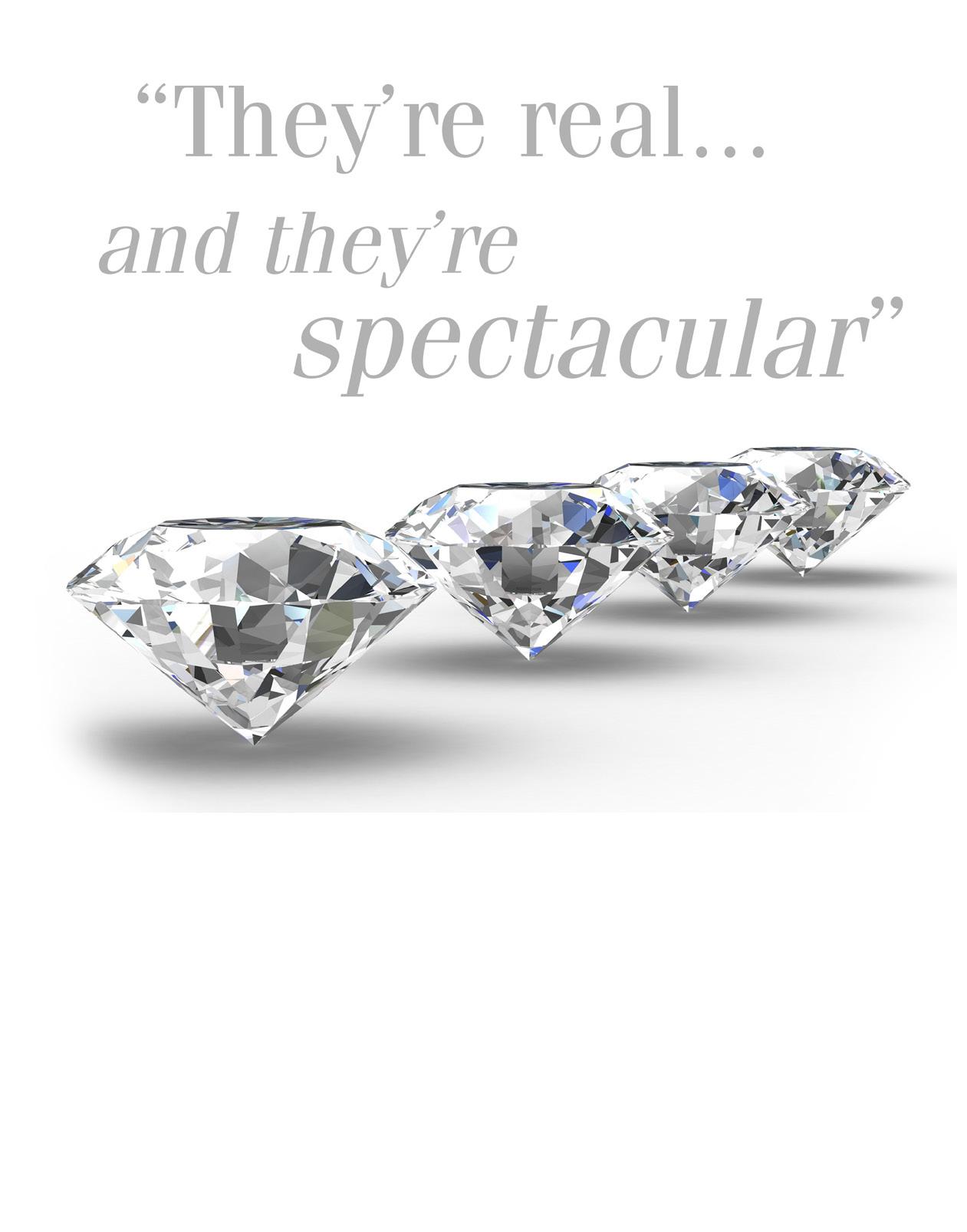











8%, $59 MILLION VOLUME:
▲ 54%, 2.4 MILLION CARATS
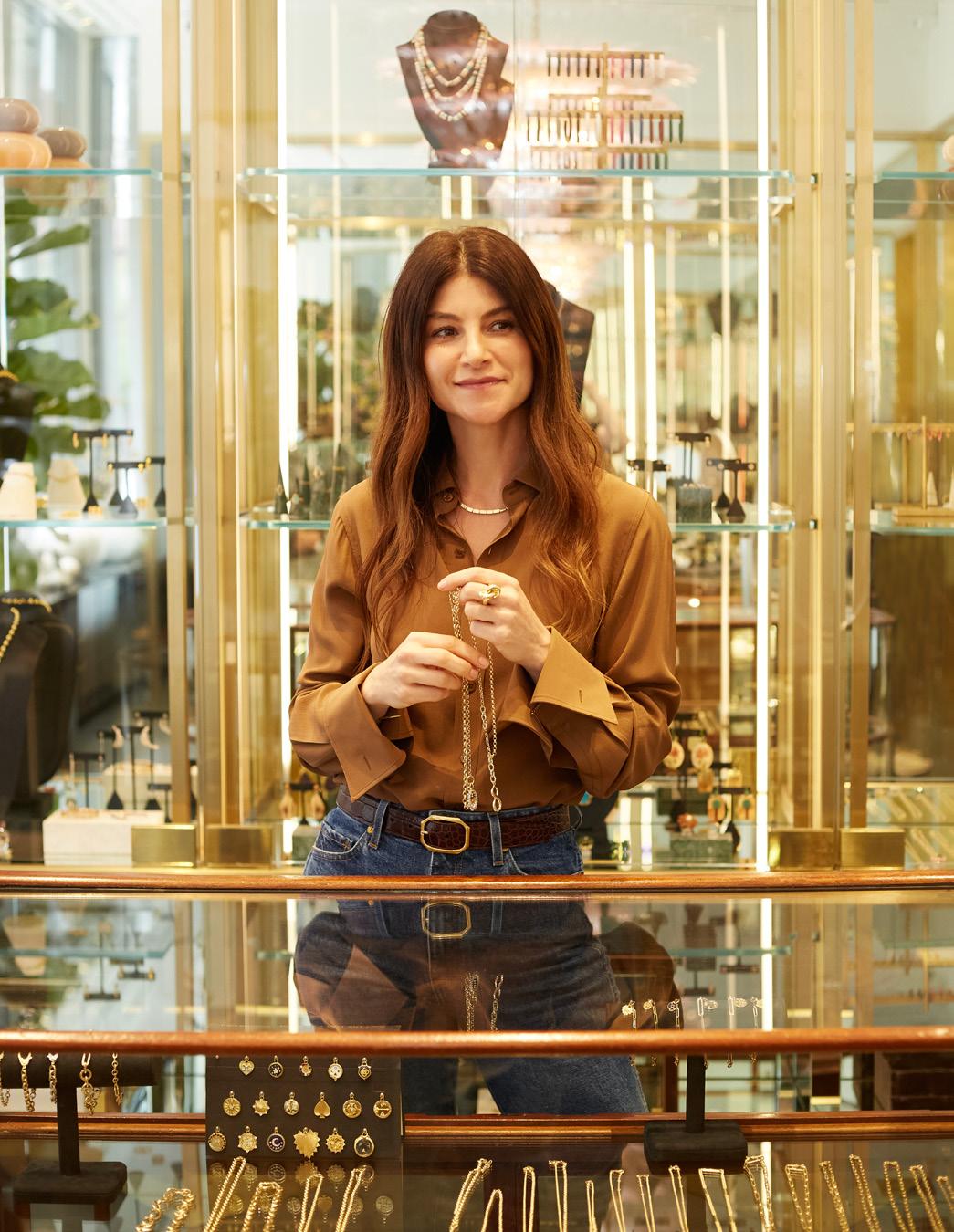

 By Joyce Kauf
By Joyce Kauf
Just steps from its original SoHo location, the newly reopened Broken English boutique reflects what is “sexy, cool and amazing about New York City,” says owner Laura Freedman.
In true New York style, it wows with sleek design and a curated collection of contemporary and vintage jewelry and home decor. Tall glass windows create an entrance that stands out from the surrounding old brick buildings. Inside, light from an Art Deco Palmette chandelier in pink Murano glass dances on the antique cases, which hold diamond and gemstone jewelry as well as colorful Lucite hoop earrings.
Both elegant and inviting, the shop offers “jewelry for everyone,” says Freedman, who believes “jewelry should commemorate memories, milestones and moments.” To that end, she sells items at all price points. “It’s part of our DNA, of who we are as a brand and what we represent: We carry jewelry that is aspirational and pieces that are attainable.”
It’s the same approach she follows at her other — and first — store in Los Angeles, which opened in 2006, taking its name from Marianne Faithfull’s iconic song. The New York branch started as a pop-up in 2014 and later closed before relocating to its current spot.
Along with celebrity clients on both coasts, her customers include people who started with less expensive pieces and have “grown into” higher price points and different styles over time, she says.
Freedman follows her intuition when selecting jewelry, choosing “innovative” pieces as well as those that make her feel good. Working with designers who are “incredible businesspeople” helps, she says. However, she also keeps a finger on the market’s pulse so she can carry jewelry that “clients gravitate to and [that] is very much part of the zeitgeist.”
She credits her mother, a former Las Vegas showgirl, with influencing her aesthetic. While she remembers the “whole regalia of feather headdresses,” she also recalls looking for geodes after the family moved to a tiny town outside of Zion National Park in Utah.
Today, she collects display cases from around the world, keeping them in a storage facility. “I buy them whenever I see them,” she says. For a future boutique, perhaps? “Maybe.”
Unfazed by a possible recession, independent jewelers are renovating, expanding or moving into larger stores — whether because the pandemic boosted business, or simply to keep up with customer needs.
 By Anthony DeMarco
By Anthony DeMarco
The surge in consumer spending during the pandemic left some retailers flush with money. Summerwind Jewelers & Goldsmiths in Portsmouth, New Hampshire, was one of them; it saw record sales in 2021 after reopening from lockdown. The extra cash allowed the store to do a full first-floor renovation that took about a year and cost well into six figures.
“We ended up in 2021 with our sales up 80% [over the previous year],” reports co-owner Melvin Reisz. “We were putting money aside every month for the renovation, and we were very fortunate in 2022 that we maintained this level of income. So far this year, we are 2% ahead of last year. Our business has not slowed down from the increase during the pandemic.”
Summerwind is a quintessential main-street business in a historic small city about an hour’s drive north of Boston. The
updates to the store included exposing more of the original brick walls, installing a vinyl floor, adding finishes to structural beams on the ceiling, and putting in new lighting and display cases. The cases are designed to let customers and staff interact side-by-side instead of over a counter, a shift that’s becoming more common in retail environments. One long display case serves as the bridal bar, where clients can sit on stools and peer down at the display of bridal jewels while speaking to the salesperson. This provides a more intimate environment, explains Reisz.
“The end result is that [the store is] still a long, narrow space, but the traffic flow is so much better, and it feels more open,” he says.
“One thing I always heard is that if you do a remodel of your store, your business generally goes up,” he adds. “It was 18 years since the last remodel, and the income from the pandemic gave us that opportunity.”
For Louis Anthony Jewelers in Pittsburgh, Pennsylvania, expanding had little to do with economic conditions; rather, the catalyst was the “overwhelming demand for additional showroom and office space, as well as hospitality services,” says vice president Veronica Guarino.
“This was a decision we made several years ago,” she explains. “In fact, we have a history of thriving in difficult economic times — opening our business during a recession in 1990, moving to a new location in 2000 during another recession, expanding our store in 2008 during yet another recession, and executing our current expansion under the threat of a recession.”
On this project, “we decided to trust our instincts. We began expanding during a time when the economy was strong, and [the store] continues to thrive today.”
The jeweler recently completed the first phase of its 3,000-square-foot addition, which included setting up shop-inshops for watch brands TAG Heuer, Tudor and Carl F. Bucherer. Phase two is set to be finished in the summer and will include a David Yurman boutique, new jewelry spaces and a Louis Anthony home collection. A dedicated corner space for Rolex is scheduled for completion in the first quarter of 2024. By the end of 2023, the store will total more than 9,000 square feet.

In May, Gunderson’s Jewelers announced plans to move its store in Omaha, Nebraska, to a new location that, once complete, will have 25,000 square feet of retail and operations space. The move is a result of customer demands in Omaha, as well as the company’s strategy to offer a greater range of luxury products and services, says Breanne Demers, president and chief operating officer of the family business, which has five stores in five Midwestern states.
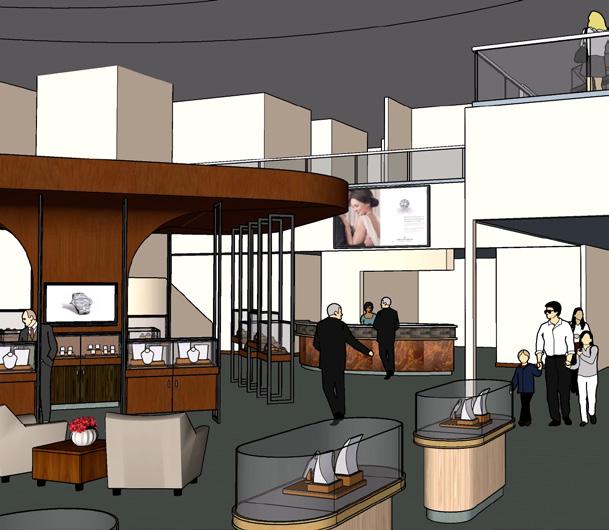
“Our current location just can’t accommodate the demand we’re seeing. Our Omaha clients want access to more exclusive brands that will require boutiques and buildouts,” she says. “We hope to transition from being an engagement-ring and timepiece store to something that attracts luxury shoppers from surrounding states.”
Gunderson is also expanding into other areas. In April 2021, the company acquired JB Hudson, a jeweler in Minneapolis, Minnesota. It is now working on relaunching that store in October.
“With dedicated boutiques for several brands, we’re demonstrating our strong partnerships with our vendors and adding an urban flair to the overall atmosphere,” Guarino elaborates.
There will also be a “hospitality bar” where customers can enjoy coffee and alcoholic drinks. “There is a strong demand for personal experiences in retail,” she says. “Our business does and will continue to feel like home to our clientele.”
As for future plans, Guarino says the store is developing its own line of custom jewelry and watches.
Even with increasing sales, store owners remain wary of buying lab-created diamonds for stock.
By Joyce KaufIt’s almost quaint to think back to some retailers’ initial reactions to synthetic diamonds. Fast forward to today, and many report an almost even split between mined and lab-grown when it comes to selling loose stones for bridal.
But the conversation has also shifted to the very real concerns of lab-grown’s plummeting prices and its oversaturation of the market. As a result, retailers walk a fine line between meeting customer demand and buying merchandise that’s losing value.
Successful retailers are always attuned to the pulse of the market. Purchasing a larger synthetic stone at a substantially lower retail price than a natural diamond is an attractive option for customers with limited budgets, as well as those who have more discretionary income.
“It’s a no-brainer. Customers really are excited that they can get a bigger stone,” says Joy Thollot, who cofounded Thollot & Co. Jewelers in Thornton, Colorado, with her husband Troy. “Fewer and fewer people think in terms of resale, especially the younger engaged couple.”
In her recent loose-stone unit sales, lab-grown has outnumbered mined two to one. The average lab-created center diamond is 2 to 2.50 carats, a size she says has been “growing by percentage” since the beginning of the year.
“Lab-grown took off like wildfire about a year and a half ago,” affirms Michael Littman, co-owner of Gary Michaels Fine Jewelers in Manalapan, New Jersey. “Even customers who might not be considered lab-grown buyers are asking for them.” These stones account for half his store’s loose-diamond bridal sales by unit, and that’s without his promoting them. He’s even sold a 15-carat lab-grown.
At Erik Runyan Jewelers in Vancouver, Washington, “almost 80% of our unit sales in the accessory area — including earrings, studs and pendants — are labgrown,” reports owner Erik Runyan. In loose stones for bridal, the ratio of mined to lab-grown unit sales is approximately 50-50. He attributes these figures to both the savings and the “size difference” that lab-grown offers.
Even as lab-grown sales increase, retailers are not stocking them for inventory the way they generally do with mined diamonds; they are largely purchasing on memo. Describing herself as an “early joiner” of the lab-grown segment, Thollot realized that “if we
be sure of its value. It creates a lot of angst to own something that will retail for less than what I paid for it.” As he notes, this is “not a good or sustainable business plan.”
Littman buys on memo for “almost 99%-plus” of his lab-grown, a practice he has followed since the beginning. “We haven’t invested in them as stock, because we still can get lab-grown that meets our exacting standards [via memo].”
To some extent, memo can shelter retailers from synthetic stones’ falling prices. But with consumers expecting to pay less, it can be hard to compete with other jewelers.
invested in it and the prices dropped, we would be upside down very quickly.” When synthetics first came on the market, her suppliers readily agreed to memo terms, she recalls. While she’s since changed vendors, she still buys her lab-grown on memo only.
Her one exception to this rule is De Beers’ Lightbox brand. “Their prices are so low. But more importantly, it is a brand that is promoted on the market,” she explains.
“I did buy some lab-grown for stock early on to have them,” relates Runyan. “But my thinking has evolved; I’m wary of purchasing a product [when] I can’t
“The visibility of loose lab-diamond pricing on well-known websites is setting prices for our clients, and I need to make sure I can stay competitive,” says Thollot. The only way to do this and still make a profit, she explains, is to work with suppliers that are willing to accept the latest market price as payment, since it may well be lower than the original memo price by the time the goods sell.
Store owners also voice concern for their clients. “I’m bluntly honest with my customer that I can only offer a trade-in for what the lab-grown is worth at the time of purchase, unlike a mined diamond they buy now and sell in the future,” says Runyan.
Even with the supply of lab-grown expanding rapidly, the robust demand should be keeping prices steadier than they are in practice, Littman argues. “Prices don’t have to drop so precipitously. Customers are buying at high levels. It almost feels like a race to the bottom.”
“It creates a lot of angst to own something that will retail for less than what I paid for it”IMAGES: SHUTTERSTOCK
French designer Alix Dumas describes the process of fashioning the spectacular floral brooch that earned her a coveted award at Couture in Las Vegas.
 By Sonia Esther Soltani
By Sonia Esther Soltani
From the picturesque French town in Brittany where she lovingly handcrafted her Magnolia brooch, to the glitzy Couture show in Las Vegas where she won first place in the Haute Couture category, Alix Dumas has been on a breathtaking journey.
Dumas’s miniature sculpture featuring diamonds, spinels and sapphires in gold, recycled silver, and titanium is a tour de force in 12 by 10 centimeters. The French designer wanted to interpret the flower — a delicate symbol of rebirth — by using innovative technology and the techniques she’s honed over the years.
“This piece really shows the specialties of my craftsmanship, all the technique of lace that I
make in metal using patterns, but in very thick layers to enhance the inherent volume of the piece,” she explains.

Playing on light and textures, the jewel displays an artistic selection of colors — among them the gradient-shaded spinels from Vietnam and the larger diamond she sourced from Antwerp-based Fima Diamonds to match the rose gold. The use of anodized titanium for its coloring and weight was equally intentional. As for silver, “I love working with [the metal] because I can work with it in very thick layers,” says Dumas. “It weighs much less than gold, so I can have bigger volumes for less weight, and it blackens with diamonds.”
While her husband lent a hand to the coloring work on the titanium, the jeweler worked on all other aspects of her creation, including positioning every single gem though she left the task of pushing the metal in to the setter.
“I want the stones to be so close that there is no metal left except for only two or sometimes three beads,” she states. “It’s a very selective setting, very high-end. But this way, you really have the color come out, and the metal is almost nowhere to be seen except in the places where I want it to be seen.”
The Magnolia brooch will soon be getting a “little sister,” using gems from the same batch of stones but in a different palette. The awardwinning piece contains spinels that run from pink to the first shades of purple, while the smaller jewel will range from very light pink to a deeper violet.

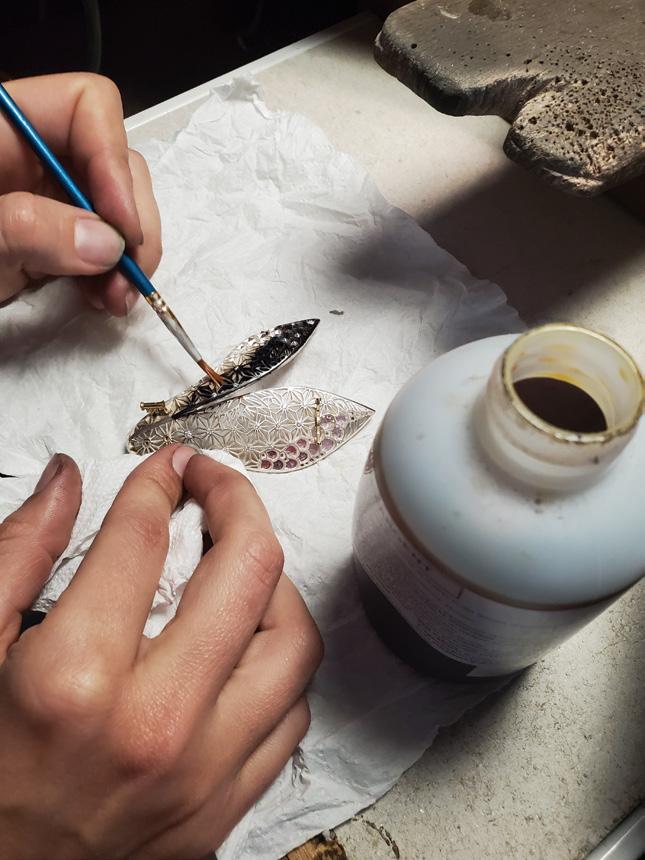
“They will go together, but not be the same vibrancy,” Dumas says.

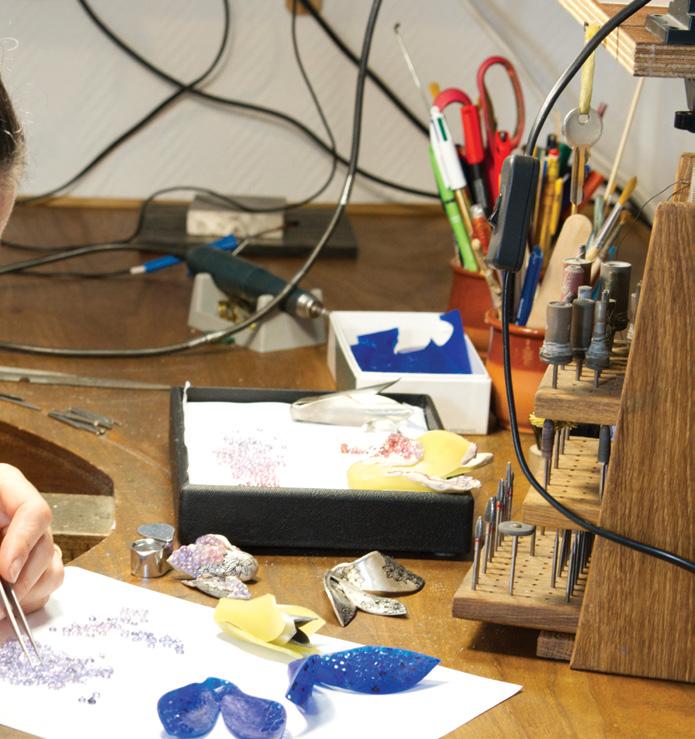
Emeralds, tsavorites and other gems in this verdant shade are sprouting up in both designer and museum collections.
By Rachael Taylor
Stroll into the American Museum of Natural History in New York right now and you will find a welcome addition to the gallery: 44 pieces of Van Cleef & Arpels jewelry, each with verdant gemstones. The treasures have been grouped together in an exhibition titled “Garden of Green,” which runs until January 2024. It offers up a forest of malachite, peridot, chrysoprase, jade and — of course — emeralds.


While the exhibition is a reminder that green gems have been steadily in favor over the past century, it is also a prompt to make us realize how fresh they feel today. Case in point: The Las Vegas shows were brimming with green gemstones.
Green’s connection with nature is obvious, but some jewelers believe the shade’s allure goes deeper. Sergio Antonini speaks of a “serene” gem that works with all skin tones, while Kimberly McDonald points out that it is the color of the heart chakra and “resonates with your energy beyond what your eye can see.” Others point to fashion trends — those that favor green, but also shades that work well with green; the list is long. On top of that, green is considered a symbol of luck, vitality and rebirth. This is a color brimming with positivity.

Jewelers report that fine emeralds are selling well in the US market, but for those seeking alternatives, there are plenty of choices. Tsavorite, demantoid garnet, tourmaline, jasper, Oregon sunstone, peacock pearls, and even green diamonds if you can find them.


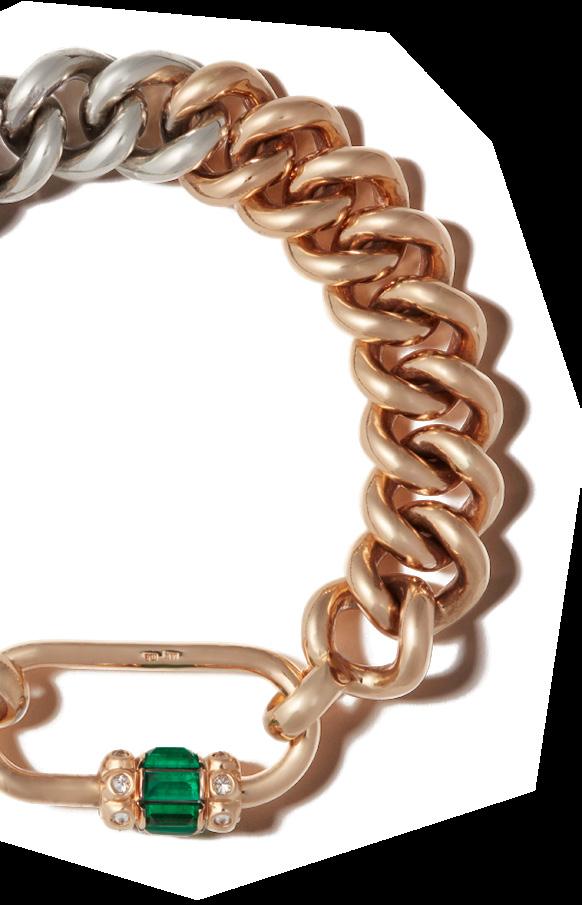

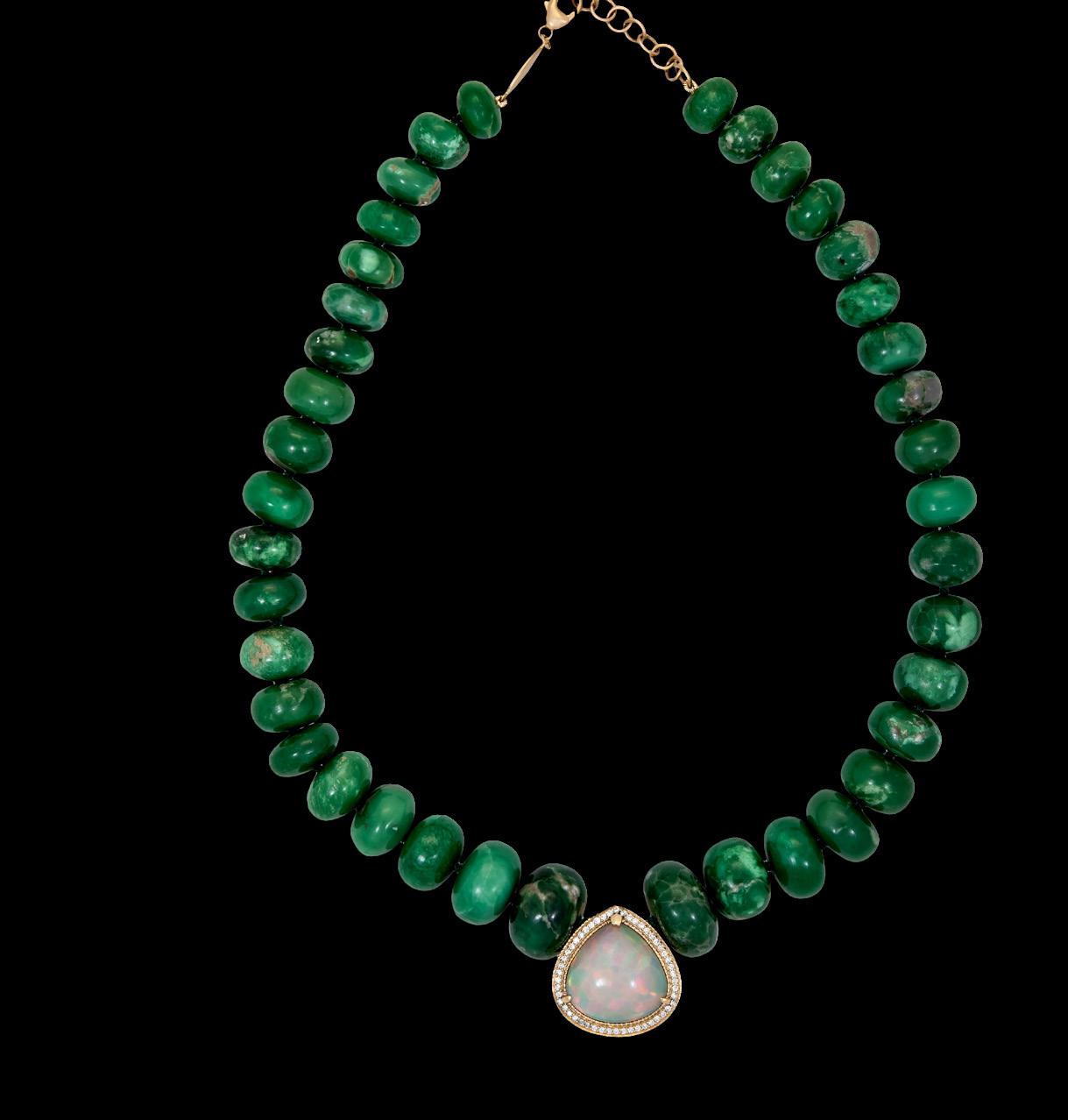

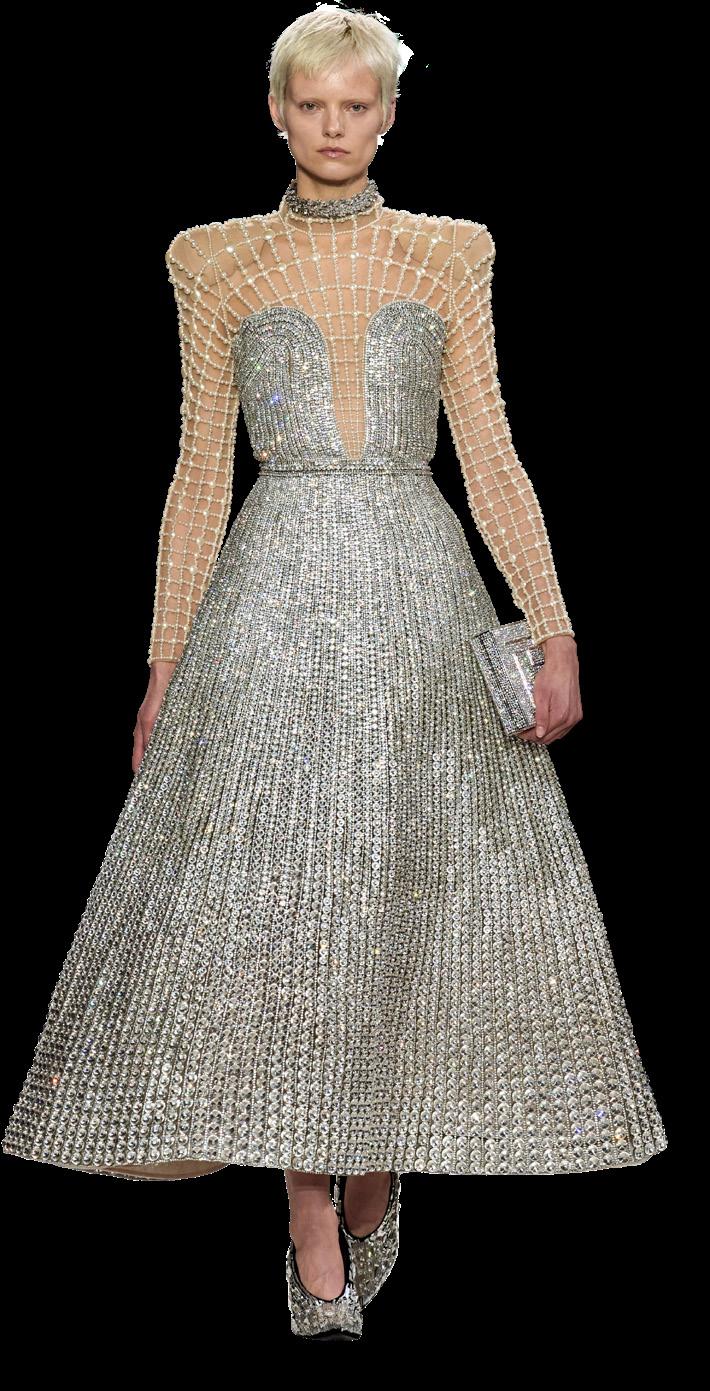

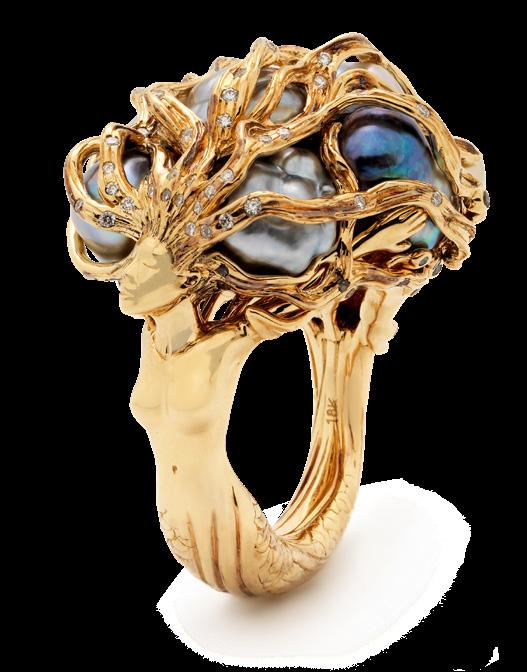



Pearls are not so much having a “wow moment” as entering a completely new era of imaginative design and styling. Whether it’s the sliced and spiked creations of Melanie Georgacopoulos and Bibi van der Velden, the edgy, unorthodox collections that Thakoon and Prabal Gurung have made for Tasaki, or the gentler but no less radical looks from Sophie Bille Brahe and Mizuki, artists and consumers alike are learning to have fun with their pearls.
Matthew Harris of jewelry brand Mateo New York is a fan of both round and baroque cultured freshwater pearls. “I absolutely adore them. You can play around with them without breaking the bank, yet make something so special.”

Pearls are firmly on fashion’s radar as well. These lustrous jewels embellished full Balmain and Givenchy outfits on the fall-winter 2023 runways and appeared in the butterfly-themed necklaces
By Francesca Fearonat Dior’s recent cruise show in Mexico. Baroque pearl earrings accessorize nearly every collection from fashion brands Erdem and Simone Rocha. Also fueling interest is Tiffany & Co.’s cute new Bird on a Pearl capsule collection, inspired by the works of designer Jean Schlumberger. Meanwhile, pearls ruled the red carpet at this year’s Met Gala and were the go-to jewelry — courtesy of Australian specialist Autore — for Queen Charlotte in Netflix’s new Bridgerton prequel.
There is a lot of buzz surrounding these little beauties. As Georgacopoulos points out, “younger people are seeing more pearls in fashion shows, which trickles through to the high street with fashion [jewelry] pieces. As they get older, they convert that look to gold and come to us.”
The quirky contours of freshwater cultured baroques and keshi pearls tend to be popular for the same reason Harris offers: They let you play.

“Because of its one-of-a-kind nature, [a baroque pearl] is just sublime when paired with gold and colored semiprecious gemstones,” he says.
Georgacopoulos agrees. “Baroques have
“I absolutely adore [cultured freshwater baroques]. You can play around with them without breaking the bank, yet make something so special”
explosion
a bit more personality than round pearls,” she says, admitting that she would have preferred if the South Sea pearls she pierced with gold for her M/G Tasaki Baroque Drops collection had been more unusually shaped.
As a sculptor, Mizuki founder Mizuki Goltz often approaches her works from a visual perspective. For those designs, she says, “I choose more specific pearls like South Sea and akoya, along with unique shapes and color.” Other times, when she wants to create a mood, she opts for freshwater and akoya pearls; “their scale, size and effortlessness become essential.”
Getting an earful Round and baroque freshwater cultured pearls have become popular with the fashion crowd because they are not a heavy investment. This makes them ideal for styling trends like stacking and layering.
Maria Tash’s Pearls Go Punk collection features a curated ear stack with pearl hoops, ear cuffs, spiked pendulum charms, and doublepearl connector-chain charms. Sophie Bille Brahe’s Wrapped line has loops of pearls that sell as individual earrings for asymmetrical wear with a stud or other designs. Mizuki has cascading pearl ear cuffs and baroque pearl hoops, and Eéra adds akoya drops to its own multicolored square hoops. Mateo New York’s Pearl Blizzard Mobile earrings

“Ear cuffs have done great with retailers overall. They do especially well with floating pearl chain necklaces and long pearl lariats. All have touches of diamonds, which add to a playful look”Marie Lichtenberg Mauli pearl necklace with gold locket. Opposite, from top: Erdem springsummer 2023 collection; Mizuki diamond and baroque pearl ring in 14-karat gold.
take inspiration from artist Alexander Calder, while the brand’s Dots collection explores the geometry of a cube-shaped ring with a perfect pearl sphere on top — quite a statement.
“Pearl ear cuffs have done great with retailers overall,” says Goltz. “They do especially well with floating pearl chain necklaces and long pearl lariats” for layered styling. “All have touches of diamonds, which add to a playful look.”
Besides being ideal for ear curation, pearls also highlight the animal- and insect-themed cuffs and necklaces of Gaelle Khouri and Bibi van der Velden. Mateo, Sophie Bille Brahe and Mizuki

are swapping simple necklaces for more playful designs with graduating pearl sizes, while knotted threads in different colors punctuate the pearls in Marie Lichtenberg’s pieces.
For retail showcases, Goltz advocates unfussy diamond or gold-chain necklaces with a statement pearl, or statement rings like her open ring with a baroque pearl and cascading diamonds — a signature Mizuki look. Pairing asymmetrical and minimalist designs with baroques makes for “a dynamic piece,” she says.
And pearls have gained serious street cred, Harris notes. “The pearl has been revolutionized with sleek and modern designs that are visually a work of art.”

 By Sonia Esther Soltani
By Sonia Esther Soltani
As a designer who’s made a name for herself with her evocative, symbolic hand-enameled jewels, Cece Fein-Hughes faces an interesting challenge. Her bespoke-jewelry clients want to pack all the elements of their lives, meaningful signs and all, onto the small surface of a signet ring or pendant. The founder of Cece Jewellery has to remind them that she’s playing with a space the size of a grain of rice for each drawing.
“People have the craziest ideas, and it’s a bit like I become a therapist, going through emails and phone calls about their life and their story,” she muses.
Her dedication to interpreting her clients’ wildest dreams has translated into loyal customers and legions of online fans. The British jeweler’s creations stem from two distinct sources of inspiration that come together harmoniously: tattoos and fairy tales.
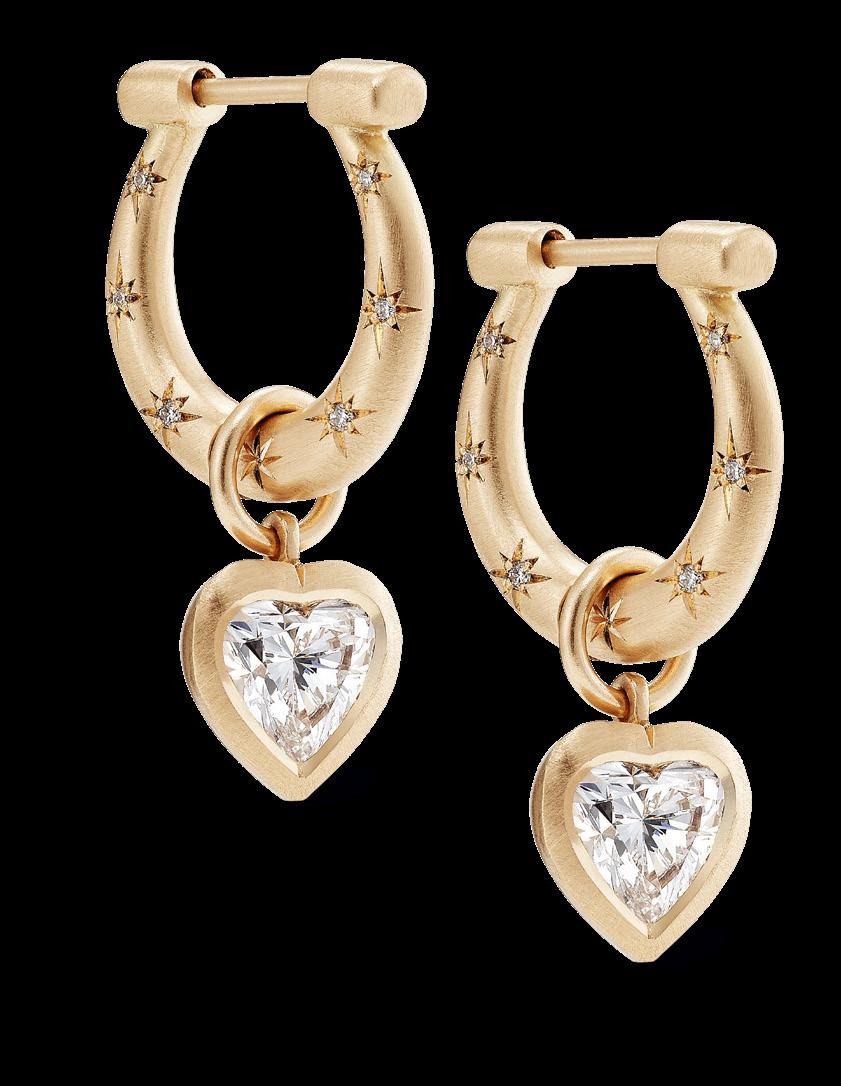
“I’m obsessed with old-school sailor tattoos,” she shares. “I just love the swallows and horns with the arrows through them. It’s quite kitsch and tacky in a really fun way. And then I merged that with fairy tales that are very English and very spooky, which remind me of where I grew up in Dartmoor, in Devon, which is very Wuthering Heights.”
These talismanic jewels have worked magic for her business, which is a family affair: Fein-Hughes’s father is the company’s manager after a career in construction, her mother helps with the creative side, and her sister has just joined.
GBP 40,000 ($51,000) seed investment and has since grown over 6,000% in terms of sales — from GBP 14,000 ($18,000) to GBP 960,000 ($1.2 million), with revenue projected to reach GBP 2 million ($2.5 million) this year. The creations, all handcrafted by goldsmiths in London’s Hatton Garden district, are available at luxury vendors Net-a-Porter, Liberty London, and Goop. The brand
has also entered the US market and is selling at stores known for their edgier curation: Catbird in New York, and Twist on the west coast.
Fein-Hughes now faces the issue that most successful companies must confront: how to retain her brand identity while growing and scaling her business. Another obstacle has to do with her signature enamel style; she only has one enameling artisan she trusts to produce work of the highest standards. As a result, she is shifting her collections toward new models that aren’t enamelreliant, such as chunky bombé-style gold rings with diamond- or sapphire-set stars, and versatile charm earrings that let the wearer write their own story — which is, after all, at the core of Cece Jewellery’s DNA.


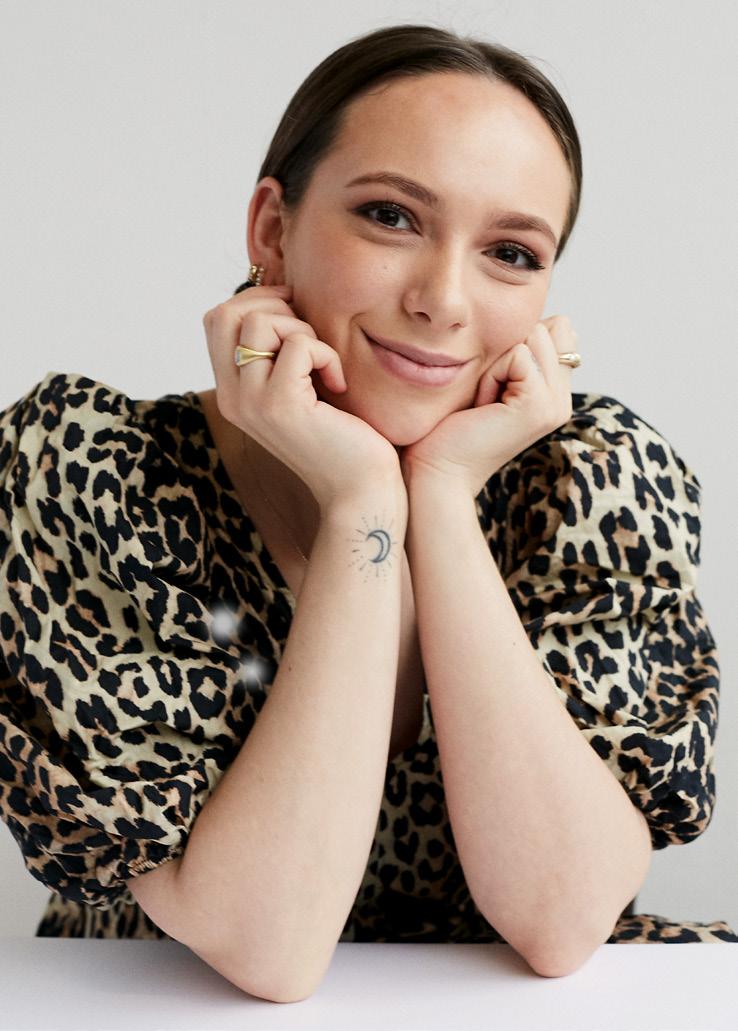
“People have the craziest ideas, and it’s a bit like I become a therapist, going through emails and phone calls about their life”








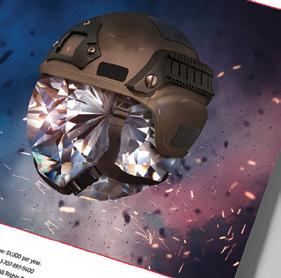










A product of ancient ammonite fossils deep underground in Canada, this iridescent stone is a mesmerizing alternative to opal.
By Richa Goyal SikriAmmolite is a biogenic gemstone that formed after its host — a mollusk-like marine creature called an ammonite — went extinct 66 million years ago. While ammonite fossils can be found in a few locations, gem-quality ammolite comes solely from the nacre of those in southern Alberta, Canada — an area that was once a warm, shallow sea surrounded by tropical rainforests during the late cretaceous period. Only a fraction of the ammolite extracted from ammonite is gem-
quality material. Hundreds of thin, iridescent layers make up the stone, mostly consisting of the mineral aragonite. Each aragonite platelet acts like a tiny prism, allowing for a kaleidoscope of color.
Most ammolite is green and red, with blue and violet being rarer and more valuable, according to the Gemological Institute of America (GIA). In its fractured form, ammolite resembles stained glass, whereas sheet ammolite is an unbroken piece displaying a continuous color pattern. Diversity of color is one of the three big factors that
jewelers use in grading this gem; the other two are intensity of iridescence and the nature of the pattern.
Different mining depths tend to produce different qualities. An ammonite deposit’s K-zone — the area 15 to 30 meters below the surface — usually yields ammolite of three grades: standard, A and AA. The blue zone, which is 20 to 65 meters deeper underground, generates AAA-grade material, the highest quality.
While its multichromatic nature makes it look similar to black opal, ammolite ranks only 3.5 to 4.5 on the Mohs hardness scale compared to opal’s 5 to 6.5, and therefore requires delicate handling. Most jewelry makers would double or triple it up with harder stones underneath to increase its durability.

Ammolite has found a particular market in the Far East among those who practice feng shui, the art of arranging one’s living space to create harmony.
Feng shui master Edward Li Kui Ming has reportedly hailed it as the “most influential stone of the millennium” because of its positive energy. In North America and the Caribbean, it’s been especially popular among tourists.
Between 5% and 8% of the ammolite mined today is AAA-grade, according to Iniskim International, one of the gemstone’s top purveyors.
“The pricing of ammolite has increased by more than 300% in the last decade alone,” reports company cofounder and president Amarjeet Grewal. “However, during the pandemic, production and sales declined. Since then, [traders have set] a variety of price points to accommodate the market, business stability, and customer expectations.”
Some have compared loose ammolite’s pricing to that of black opal due to their aesthetic similarities, Grewal notes, but despite its shimmering beauty and spectrum of colors, ammolite still costs a fraction of what opals do. That said, designers are seeking rare, distinctive material, and the value of this gem continues to grow with its popularity.
The act of cutting stones is where geometry meets art. The lapidary, or gem-cutter, is trained to cut facets to optimize the way light flows through stones, maximizing their radiance. Whether it’s a tiny melee stone for the face of a Swiss watch, or the 10.57-carat Eternal Pink diamond, which recently sold at Sotheby’s for $34.8 million, almost all gems destined for jewelry will pass through the lapidary’s hands.
The heartland of lapidary arts is Europe, where cutting technologies developed in the Middle Ages. These were honed over time to feed the continent’s thriving jewelry and watchmaking industries. More recently, gem-cutting has bloomed in Asia, with European techniques getting exported to Thailand, India and Myanmar (Burma). However, the advent of cheaper labor in such areas, the spread of machine cutting for low-value stones — notably in China — and a sharp decline in training opportunities have all contributed to a shortage of European skill in this field, experts say.
London-based gem-cutter and goldsmith Mark Nuell learned from Austrian cutters near his family’s sapphire mine in Australia. Now, he says, “the increased availability of poor-quality cutting [at lower costs in areas like Asia] has impacted historical gem-cutting centers in Europe.”
Others — like American gemologist and lapidary Justin K Prim — believe the lack of training has driven the demise. In France, where 8,000 cutters supplied the jewelry industry in the 1920s, there are now fewer than 100, he says. The British national apprenticeship program closed in the 1970s, and the Swiss program ended in 2011.

France was home to 8,000 gem-cutters in the 1920s, but now has fewer than 100, according to lapidary Justin K Prim.
In London and New York, “most cutters come from other countries; anyone interested in a career in gem-cutting would have to find a professional [with whom to] apprentice privately,” says Prim, who is based in Bangkok. Thailand has no official training opportunities, he adds, and Indian cutters report earning less than Uber drivers.
Prim believes cultivating local talent is key: “Exporting skills to Asia began in the 1970s. The cost of labor in Thailand and India will eventually rise to the point that it’s not cost-efficient for Europe and the US.” Providing more local training to power the big jewelry and watchmaking hubs would help reboot the industry, he maintains.
“The future looks good at the higher end of the market, but we need more training opportunities to help it thrive again,” agrees Nuell.

Seeds of hope are there: Germany still has a small training program, and all six of the cutting houses in France — Grospiron, Piat, Lemercier, Manuel Soirat, Dalloz and Ulysse Poncet — take on apprentices.
Victoria Raynaud, Prim’s wife, was “one of the last two apprentices on the Swiss program, starting at high school age,” he relates. “Because she was trained at such a young age and went on to learn wider skills, at 30, she is one of the youngest master cutters in the world.”
Nuell, who cuts for his own jewelry as well as collectors, believes there is still a market for
Amid financial pressures and declining training opportunities, the number of gem-cutters is plummeting — but there is cause for hope.
By Kate Matthams
With an 800-year lapidary tradition, France was where many of the technical breakthroughs that shaped the industry took place. Six cutting houses in Paris and the Jura area still take on apprentices.


Waterwheel-powered sandstone cutting stones were first used in IdarOberstein during the 13th century. Today, a national apprenticeship program trains a small number of gem-cutters.
“a well-cut gem. Lapidary artists like Mark Gronlund, Bryan D. Drummond and Anna Gilbert are sought-after for their originality.” High-jewelry houses like Boucheron, Tiffany & Co. and Harry Winston will continue to use faceted gemstones. The Cartier Jewellery Institute provides ongoing training for the maison’s gem-cutters, while the Van Cleef & Arpels-supported L’Ecole, School of Jewelry Arts, offers introductory lapidary courses that could spark a career.

“One of my main missions is to record as many of the traditional techniques of European cutters as I can, while they still exist,” says Prim. “The future won’t look like the guilds and apprenticeships of the past, but documentation might help keep the industry from total loss. Hopefully we won’t get to that point.”
Swiss lapidary technology can be found in workshops around the world. Today, the few remaining Swiss cutters specialize in precision-faceting small stones for the watch industry.
The histories of Czech gemcutting and Bohemian garnets are intertwined. Home to the quadrant tool that revolutionized lapidary practices in the 1600s, the Czech Republic boasts Europe’s only surviving school for gem-cutters.
Although England has a 700-year lapidary history, the country’s heyday in this field came after the Industrial Revolution, in the 19th and 20th centuries.
Indian cutters have used hand-held tools for centuries, focusing on polishing and removing flaws. More recently, a community of highly skilled cutters using modern technology has emerged in Sri Lanka.
Zircon is a beautiful natural gemstone that comes in a wide array of colors and possesses a remarkable optical phenomenon known as birefringence, or double refraction. But despite its allure, zircon is possibly the most misunderstood and underrated gem, because it is often confused with the manmade material cubic zirconia.
“I blame the name. To be clear, zircons are naturally occurring, and cubic zirconias are made in labs,” says designer Lauren Harwell Godfrey, founder of
jewelry brand Harwell Godfrey, who uses zircon in her bespoke pieces.
“It would help improve its popularity in the commercial market if there were more effort put into educating consumers about its special properties,” comments Vram Minassian, founder of Los Angelesbased jeweler Vram.
Virtually all zircons are heat-treated to enhance or change their hues, which range from serene, saturated blues to greens and vibrant yellows, as well as brown and red shades. There’s even a


colorless option. This color versatility, combined with the stone’s fire and affordability, makes zircon an appealing choice for both designers and consumers seeking a distinctive aesthetic appeal.
A jeweler’s delight
Zircon’s underuse in jewelry design means it can be a distinguishing feature for those jewelers who do incorporate it.
The gem’s brilliant flash and intense hues lend themselves well to Harwell Godfrey’s ebullient and colorful arrangements. “I’ve used a really juicy heart shape and a big beautiful cushion in the blue color — both for rings — but I am currently loving brown zircon and want to use it in a cocktail ring,” says the designer. “I am obsessed with the blue variety and its turquoise hue. The only other stone that comes close to that is Paraiba tourmaline, and they are much more expensive.”
Minassian uses zircon “mainly because of the incredible intensity and variety of color, the dispersion, and the durability,” he says. He capitalizes on its earthy autumnal shades in his Oak Chrona earrings, which feature an array of round brilliant-cut stones in brown and orange. He also includes elements like inverted pear-shaped rose cuts to create eyecatching focal points.


The accessible price point of zircon can make it more popular than other stones with similar colors. Even with prices rising, they “are still much lower than a saturated blue aquamarine or indicolite tourmaline, and of course much less than sapphire or diamond (for the colorless stones),” says Josh Saltzman of Nomad’s. Wholesale, the blue variety tends to sell for more than other colors, according to Mohsin Mansoori of Mohra India. A top 10-carat blue zircon can cost between $150 and $200 per carat, he says, with 20-carat stones going for $300 to $400 a carat and 50-carat specimens from $450 to $750 per carat.
Fine stones over 15 carats are getting more difficult to source, Saltzman reports. “As with pretty much everything, prices will continue to increase as the costs of production increase worldwide.” He expects demand for good-quality material to remain strong, “as it fills a niche of lovely blue colors at an affordable price point.”
It’s not easy finding green
“Green is the rarest color of zircon,” according to jewelry designer Paula Crevoshay, who has nonetheless managed to acquire two large natural-color green zircon cabochons for her creations. One is the 32.83-carat specimen that adorns her Green Tara cuff. The other is a 43.79-carat stone from Ratnapura, Sri Lanka, which she surrounded with four green tourmalines in her George pendant — the first piece of zircon jewelry to join the Smithsonian Institution’s National Gem Collection.
“Large green zircons are so rare that they are almost impossible to find, whereas blue and white zircons are heattreated and are readily available,” she says. “Therefore, I use [the latter two] whenever I feel they will contribute to my composition.” Crevoshay’s works feature a whole range of sizes, from large center stones to smaller accent stones in pavé.
Cut out for success
Rounds and ovals make up the majority of the zircon collection at gem-cutting firm Nomad’s, says regional manager Josh Saltzman, as these cuts showcase the stones’ brilliance and dispersion very well. Cushion, hexagon and emerald cuts have also been popular, he adds.
Mohsin Mansoori of gem dealer Mohra India owns a small artisanal zircon mine in Cambodia’s Ratanakiri province. The US and European markets tend to seek “loupe-clean stones, Asscher and cushion cuts,” he states, while the Indian market prefers ovals and more included stones.
Blue is the color of choice for 90% of buyers, with some opting for brown and white, he says. “High-quality blue zircon is very popular in Europe and Japan. However, production has been down more than 70% in the last four years.”
Finding clean top colors is still a challenge, Saltzman reports. “For blue zircon, we look for a bright, pure blue color without unpleasant undertones and [with an] even color, as color zoning can be an issue with zircon.”
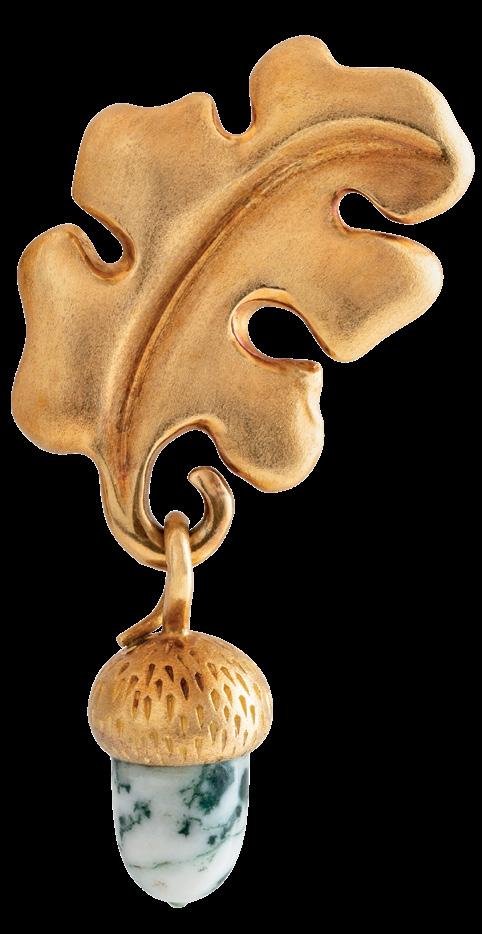 By David Brough
By David Brough
Jewels by contemporary American designer Joel Arthur Rosenthal — aka JAR — have gathered momentum in recent years. When 28 JAR pieces from a private collection went up for auction at Christie’s Geneva on May 17, 100% of them found buyers. Many of these items outperformed estimates, underlining the appeal of the Paris-based artist’s intricately crafted jewelry as a potential investment.
That said, the Sotheby’s Geneva sale a day earlier saw mixed results for such pieces. Of the six JAR items on offer from the collection of Austrian photographer Renate Graf, only three sold, possibly because bidders were waiting for the larger selection at Christie’s.

The Christie’s collection, part of the house’s Magnificent Jewels auction, featured an eclectic array of cutting-edge designs, many of them taking inspiration from nature. The pieces also blended high-value gemstones with lower-value materials in unusual artistic combinations, a signature style of the designer. The results were in line with previous JAR sales, with the most artistically avant-garde designs often surpassing estimates.
“Any unique piece with high-quality gemstones can have investment appeal,” says Munich-based dealer Ioannis Alexandris, who tracked the Geneva sales. “Signed highend jewelry, especially from JAR, is always sought after by collectors and connoisseurs.”
A highlight of the Christie’s auction was a sapphire, spinel and diamond Eye

bangle (lot 593) that had been prominent in the auction house’s publicity. It attracted a bidding frenzy and more than tripled its high estimate of CHF 250,000 ($278,878), achieving CHF 856,800 ($955,769). A pair of multi-gem Pansy earrings (lot 581) was another of the JAR successes, netting CHF 491,400 ($548,162) after intense bidding — well above the lot’s CHF 250,000 high estimate.
At Sotheby’s, the JAR sales included two diamond rings: one with a cushioncut, 10.03-carat stone (lot 646) that achieved CHF 635,000 ($708,349), and one with a step-cut, 6.01-carat specimen (lot 648) that garnered CHF 279,400 ($311,673), both comfortably within estimates. A sapphire bracelet (lot 645) fetched CHF 635,000 as well. However, a morganite necklace and a tourmaline ring failed to sell, and another diamond ring was withdrawn.
When determining the market value of jewels at auction, “we cannot judge the work of a designer from a single sale,” says Alexandris. “Most JAR jewelry items are innovative pieces of art.”


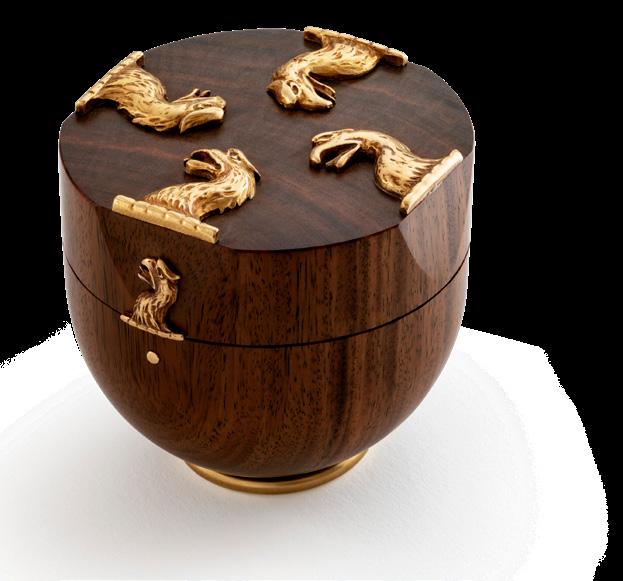
“Any unique piece with high-quality gemstones can have investment appeal. Signed high-end jewelry, especially from JAR, is always sought after by collectors and connoisseurs”

The controversial Christie’s sale of Austrian billionaire Heidi Horten’s jewelry beat estimates despite publicity about how her first husband, Helmut Horten, had made his fortune in Nazi Germany.
The sale of the Horten collection in Geneva garnered over $202 million, well above the $162 million low estimate for the three-part auction. A number of exceptional signed pieces outperformed expectations, though there were a few disappointing results.
The subdued result for the Sunrise Ruby dominated the talk within the trade following part one of the sale, which took place on May 10. The 25.59-carat gem was the center of a Cartier ring that netted CHF 13.1 million ($14.6 million), falling short of its CHF 14 million ($15.7 million) low estimate. In 2015, the same piece sold for more than $30 million at a Sotheby’s auction.
Some dealers stated privately that they’d eschewed bidding in the May sale after the World Federation of Diamond Bourses (WFDB) said Helmut Horten had bought Jewish businesses at a fraction of their worth in forced transactions. The WFDB had written a public letter to Christie’s to protest the auction.
“I would like to express the WFDB’s objection to this sale, so clearly associated with Nazi plunder of Jewish businesses,” wrote federation president Yoram Dvash.
Nonetheless, many items in the sale exceeded their estimates — such as a Bulgari ring featuring a rare emeraldcut, fancy-intense-pink diamond of 6.99 carats, which more than doubled its highest valuation by selling for CHF 9.1 million ($10.2 million).
Shortly after the Horten sale, both Christie’s and Sotheby’s staged Magnificent Jewels auctions in Geneva. These once again highlighted the resilience of the top-tier market, especially demand for remarkable signed pieces.
At the May 17 Christie’s Magnificent Jewels auction in the Four Seasons Hotel des Bergues — which included the Fabulous Jewels by JAR sale — signed items performed well. That said, one of the top lots was the Star of Egypt, an unmounted cut-cornered rectangular step-cut diamond of 105.52 carats. It sold for CHF 2.7 million ($3 million) — comfortably within estimates — following sustained bidding.
At the Sotheby’s event, which took place the day before at the Mandarin Oriental hotel, the top lot was the 11.16-carat Laguna Blu diamond. The Bulgari ring featuring the exquisite fancy-vivid-blue stone netted $25.2
million, the highest value a jewel from that maison has ever achieved at auction.
The Bulgari Laguna Blu was the last item to go under the hammer in the second session of the Magnificent Jewels and Noble Jewels sale, following a string of spectacular signed pieces and exceptional gemstones. After a four-minute battle among three telephone bidders and one in the room, it eventually went to a phone buyer.
Colored gems, especially in signed jewels, had an exceptional evening at Sotheby’s. Rubies, emeralds, sapphires, and yellow and pink diamonds led the charge.
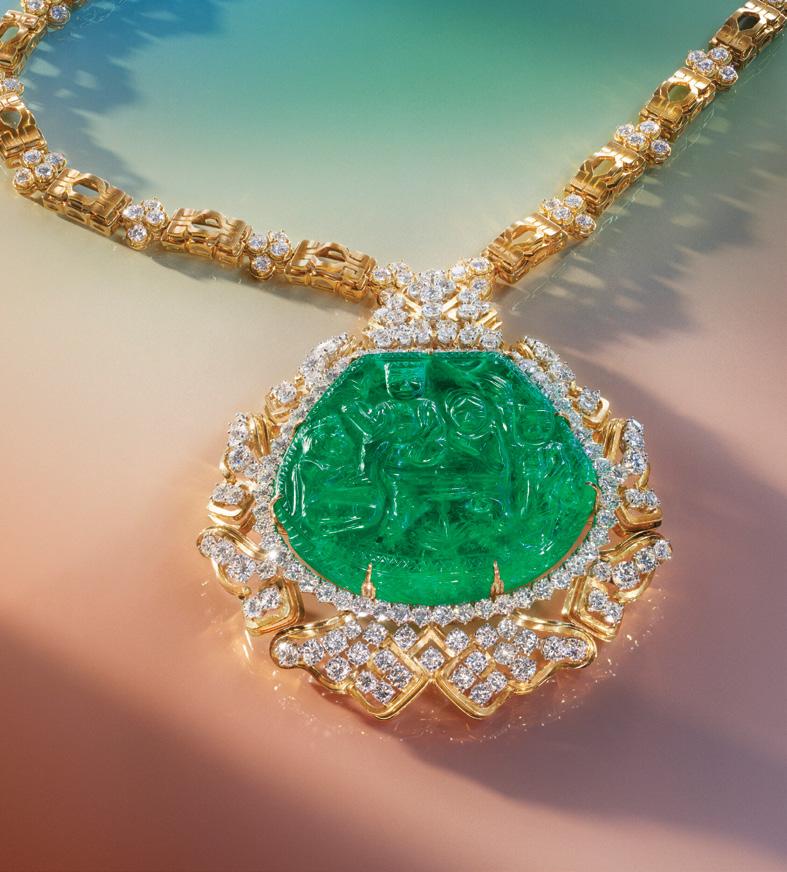
“Sapphires from all origins were sought after, and surprisingly, spinels — in vibrant color and clean — reached
top prices,” says Geneva-based dealer Elke Berr. “Paraiba tourmalines and fancy-color sapphires, especially pinks, fetched higher prices than estimated.”
A necklace incorporating finely graduated natural pearls elicited a bidding frenzy at the Sotheby’s sale, underscoring their extreme rarity and investment potential. The necklace garnered nearly four times its high estimate, bringing in CHF 1.1 million ($1.2 million).
“Despite the enormous sale totals for the week, the market is still quite selective,” remarks consultant Matthew Girling, who was formerly the global CEO of Bonhams. “Signed period jewelry performed really well, but demand for diamonds and colored stones was more muted, unless the estimates were appealing and calibrated to attract demand.”
“SAPPHIRES FROM ALL ORIGINS WERE SOUGHT AFTER, AND SURPRISINGLY, SPINELS...REACHED TOP PRICES”
The spring auction season ended in June on a mostly quiet note, with a couple of important exceptions. The Sotheby’s and Christie’s sales in New York presented fewer lots than usual, and for the most part, the items sold within estimates.
While the market is “a little cooler than it was a year ago,” it still has strength, says Greg Kwiat, owner of diamond specialist Kwiat and CEO of estate jeweler Fred Leighton. “I think you saw sales comfortably within the estimates this time. There were fewer lots that went through the roof compared to a year ago.”
David Doppelt agrees. “The June sales were pretty subdued, I thought, although

the sales were well curated,” says the president of jeweler Jonathan Doppelt. “It almost always seems to be the case that June brings…a lack of energy in general, and that sort of matched the sales.”
The Sotheby’s Magnificent Jewels sale on June 8 provided most of the excitement with its two top lots: the 55.22-carat Estrela de Fura ruby, which sold for $34.8 million, and the fancy-vivid-purplishpink, internally flawless Eternal Pink diamond, which remarkably attained the same sum.
At $630,288 per carat, the Estrela de Fura established a world-record
total not only for a ruby, but for any colored gemstone at auction. It was also the largest ruby ever to go under the hammer. Its presale estimate was more than $30 million.
The ruby came from a 101-carat rough that Fura Gems unearthed at its mine in Montepuez, Mozambique. Instead of selling the rough gem through the trade, Fura founder and CEO Dev Shetty chose to take the stone to auction on his own. The idea was to promote the quality of rubies from Mozambique as similar to specimens from Burma (Myanmar), which has historically been considered the main source of high-quality rubies.
“When it comes to rubies, I think origin clearly matters in regard to value, but it’s not always the determinant of beauty,” comments Kwiat. “You can have gemstones from different origins that are considered secondary, and they can still produce beautiful gems.... I saw [this] gem, and the color was pretty extraordinary.”
Meanwhile, the 10.57-carat Eternal Pink’s total set a world auction record for a fancy-purplish-pink diamond, and so did its per-carat price of $3.3 million. Its presale estimate was $35 million.

“It was a remarkable one-of-a-kind diamond,” states Doppelt. “That fancyvivid purple-pink is the most sought-after color you can buy.”
This was the first time in auction history that two gems passed the $30 million mark at the same sale. Fueled by those two lots, the auction achieved $95.9 million — the highest jewelry total ever for Sotheby’s New York — with a 91% sellthrough rate.
Christie’s held two sales in New York on June 7: The Magnificent Jewels of Anne Eisenhower, and the house’s traditional Magnificent Jewels sale. At both events, signed jewels shone, as did rubies.
All 31 lots in the Eisenhower sale found buyers. The top lot was a 1937 ruby and
diamond Jarretière bracelet by Van Cleef & Arpels that fetched more than $4.5 million, just cresting its high estimate. The piece once belonged to early-20th-century actress and style icon Marlene Dietrich. The number-two lot was also a Van Cleef & Arpels piece: a ruby and diamond necklace that Eisenhower had commissioned specifically to match the bracelet.
“I always find single-owner sales interesting, to see the tastes and style of the individual collection and to marvel at their pieces,” Kwiat says. “The Marlene Dietrich bracelet achieved a very good price, and overall, it appeared to me it was a very successful sale.”
In all the New York auctions, the traditional jewelry houses continued to account for some of the most soughtafter lots, he adds. Aside from Van Cleef & Arpels, Cartier stood out; all the sales featured several Panthère pieces, and many achieved prices above estimates. The Sotheby’s sale alone featured 24 Cartier jewels, seven of which were Panthère designs. The Eisenhower sale offered two yellow gold Panthère items.
“Van Cleef and Cartier continue to be the two strongest names in jewelry,” Kwiat says. “These prolific houses continue to show incredible strength.”
Also intriguing for Kwiat was an elaborate Étoile de Mer (Starfish) jewel by famed artist Salvador Dalí that fetched $982,800 at Christie’s. “It didn’t quite make the estimates, but it was quite a benchmark for an artist’s piece.”
Doppelt’s firm specializes in fancyyellow diamonds, and he expresses enthusiasm for what appears to be a return of demand for these gems.
“Yellow diamonds really have had an incredible renaissance,” he remarks. “The demand…is as high as it has ever been. You don’t see them rising in price in astronomical ways, but you really can’t find what you’re looking for. I think they did well across the board. It was pretty competitive trying to buy anything in yellow. The best yellow diamonds don’t slip through the cracks.”
Diamonds of distinctive shapes and hues complemented a smattering of spectacular colored stones at the latest Hong Kong sales.
 By Anthony DeMarco
By Anthony DeMarco
The Magnificent Jewels auction at Christie’s featured a trio of fancycolored diamonds, exceptional colored gems and being a Hong Kong sale fine examples of jadeite. However, one of the top lots in the May 27 sale was an unusually shaped colorless diamond that triggered a bidding war and nearly doubled its high estimate.
The 21.75-carat, D-color, internally flawless diamond fetched more than HKD 30.6 million ($3.9 million), shooting past its HKD 18 million ($2.3 million) high estimate. The auction house didn’t mention it, but the rectangular-shaped diamond with the extra-large table featured the Ashoka cut, a proprietary cut by New York diamond firm William Goldberg. Adding to the piece’s value was the mounting: a finely crafted platinum ring by Mitsuo Kaji, an accomplished Japanese designer who owned the diamond, according to William Goldberg’s Benjamin Goldberg.
“It was sold 20 years ago,” Goldberg says. “Kaji held on to it for many years. We were trying to buy it back from him, but we couldn’t. We were very excited to see it at auction.”
The company made an offer on the gem at the Christie’s auction but quickly fell out of the running when a bidding battle erupted among three Asian private collectors, Goldberg recalls. “From our perspective, it was still very exciting [that] it achieved such a high price.”
The diamond also wowed gemologist Gary Roskin of the Roskin Gem News Report.
“When you look at the diamond’s report, you may say, ‘It’s not for me,’ but when you look at the diamond, it was spectacular,” he says. “You should not judge the beauty of a diamond based on the report. This is a great example of that.”
Beauty appeared to be the focus in the curation of the Christie’s sale, according to Roskin, as well as at the Phillips and Bonhams Hong Kong Jewels and Jadeite sales, which took place respectively on May 23 and 28.
“We often get wrapped up with the biggest or the most vivid or most unusual, or a jewelry designer’s name or big house name,” he reflects. “Sometimes we forget to look at the piece and just say, ‘Wow, that is really stunning.’ You saw that with a lot of the results.”
THREE OF A KIND Roskind also points to the breadth and depth of hues that were on offer in Hong Kong. “I’m impressed with all of the auction houses and how much color there was.”
Three of the four top lots at Christie’s featured fancy-colored diamonds. The piece that earned the highest total was a pear-shaped brilliant-cut, 4.83-carat, fancy-vivid-blue, internally flawless diamond in a diamond and gold ring that fetched more than HKD 68.9 million ($8.8 million).
The number-three item was a pear modified brilliant-cut, 8.92-carat, fancy-vivid-yellow-orange, internally flawless diamond between two colorless diamonds on a gold and platinum ring. It realized more than HKD 31.8 million ($4.1 million), just beating its high estimate. Right behind it was a 4.08-carat diamond that sold for HKD 31.2 million ($4 million), within estimates for the pear modified brilliant-cut, fancy-intensepink, internally flawless stone.
“I saw the vivid blue. It was very beautiful and made a nice price,” Goldberg says. “The vivid-yellow-orange, pear shaped diamond was beautiful as well and made a ridiculous price. It’s always private collectors buying these goods, not dealers.”
Contemporary designer Kat Florence had two jewels that stood out for
Roskin at the Bonhams sale. The first was a pendant necklace with a round, 103.04-carat, greenish-blue Paraiba-type tourmaline of Mozambican origin. It brought in HKD 1.9 million ($244,266), about $2,300 per carat. Had the gem been from the original Paraiba mines in Brazil, it could have garnered $5,000 to $10,000 per carat, Roskin estimates.
He was more impressed with another Florence piece, a diamond ring in 18-karat yellow gold with an elongated cushion-shaped, 9.08-carat black opal. It sold for HKD 396,800 ($50,772).
A pair of diamond pavé earrings bearing oval-shaped red spinels of 9.91 and 9.17 carats also caught his eye. The jewels achieved more than HKD 1.1 million ($146,764).
“Whoever curated the Bonhams auction did a great job of mixing up a lot of different colors and gems,” Roskin comments. “Typically, you’ll see lots of emeralds, rubies and sapphires and not a lot of anything else. But this was a nice mix of color, with some real impressive pieces.”
At the Phillips auction, the top two lots came as no surprise to Roskin. The first was a Bulgari diamond necklace centering a cushion-shaped, 118.35-carat Sri Lankan sapphire pendant.
“That Bulgari necklace was stunning,” he declares. “There was no doubt it was going to be the number-one piece in the auction. It has the name and size, and it was beautiful.”
The second-highest lot was a diamond ring by celebrated Tiffany & Co. designer Jean Schlumberger, boasting a 6.26-carat Kashmir sapphire.
In addition to their beauty, these pieces and others showed the continued strength of the historic and contemporary high-jewelry houses, Roskin says. “I’m always impressed with how well the big-name houses do. It’s because they really know how to design jewelry.”
Leslie Roskind, senior specialist for jewelry and watches at Hindman’s recently opened New York office, reflects on her professional journey, market changes, and Elizabeth Taylor.
By Sonia Esther SoltaniCan you describe your current role at Hindman?
While Hindman has been doing business in New York for quite some time now, I’m very excited to be among the first specialists based there since we established a presence in the New York market last fall. As a senior specialist, I’ll be working on bringing in collections for sale from New York and the east coast region, and collaborating with Hindman’s jewelry team in our Chicago headquarters and our Palm Beach, Denver and California locations (four out of 16 locations across the country). In addition, I’ll work closely with my
New York colleagues on one-to-one client outreach, strategic partnerships, programming, and events. I’ve had the privilege in my career of working with some of the most important jewelry collectors and [members of] the trade in the Americas (New York and Los Angeles) and in Hong Kong, and I’m excited to offer these existing and new clients the bespoke marketing and high-touch client service for which Hindman is known.
How did you start your career as a specialist?
After graduating as a graduate gemologist at the Gemological Institute of America (GIA), I was eager to dive into the jewelry world, and my first job was selling wedding bands in one of the exchanges on 47th Street. From there, I was given a great opportunity to join Christie’s as a viewing assistant and then intern. I literally started on the bottom rung. I absolutely fell in love with the auction world and the jewelry industry and dedicated myself to learning, reading, and staying engaged with the market and clients. I was fortunate to grow my career at Christie’s, and in the 17 years I was there, I worked in New York, Geneva and Los Angeles. After those incredible experiences, I wanted to spread my wings a bit and landed positions in the wholesale and retail sides of the business, including the prestigious Fred Leighton. I’m delighted that I have made my way back to my natural habitat — the world of auctions — and after a stint in Hong Kong, I am thrilled to join the Hindman team.
What was the first piece of jewelry you brought to auction?
It wasn’t my first consignment, but early in my career as a specialist, I was absolutely thrilled that a private collector entrusted me with the sale of two of her important diamond rings, both by David Webb — a 22.46-carat, E-color VS2, and a 39.83-carat fancy-vivid yellow. Both were illustrated on the catalogue cover.

What has been the most exciting collection to handle?
Throughout my career, I’ve had the privilege of bringing to market collections from some truly iconic names. During my time at Christie’s, the most exciting sale was being part of the collection of Elizabeth Taylor [in 2011]. It was truly special. I traveled with the jewels to Los Angeles and Hong Kong and
finally on to New York, where they sold over the course of several days. The crowds during the exhibitions and the adoration shown for Ms. Taylor were tremendous, and the recordbreaking results illustrated the importance of the provenance and the remarkable jewels themselves. Not that one should pick favorites, [but] my top two were the Edith Head necklace composed of 18th- and 19th-century ivory opera tokens, and the Bulgari sapphire and diamond sautoir gifted to her by [husband] Richard Burton for her 40th birthday; [it] was set with a stunning 52.72-carat, unheated Burmese cabochon sapphire.
How has the auction market changed in the past three decades?
Three decades is quite a bit of time! First and foremost, the internet and social media. It has completely changed our ability to reach clients globally, market our sales, educate collectors [and] offer online auctions, and the ability for clients to watch live auctions and bid online or via smart phone from anywhere in the world.
The importance of gemological reports for colored stones, noting both origin and treatment/enhancement, has absolutely changed not just the auction market, but the retail and resale markets as well. For collectors, it gives consumer confidence, and for appraisers and auction house specialists, it helps determine the value.
Lastly, I would say the growth of the coloreddiamond market. When I first started, colored diamonds offered at auction were few and far between. The demand for high-quality stones has grown exponentially.
What’s the most fulfilling part of your job?
Meeting clients and hearing the stories behind the jewels. It’s nice to listen to clients reminisce about their grandmother wearing a brooch, or the story behind receiving a gift to mark a milestone. It is a privilege to be entrusted with finding the jewelry a new home.
Is there a piece of jewelry you wish you could have bought?

I was obsessed with the loveliest Art Deco black lacquer band with scrolling plaques set with diamonds, signed Cartier, London. There was something just chic and classic about it. I was outbid, but it did find a good home!
What advice would you give to an aspiring specialist? Read all the books you can, be curious, listen and observe, embrace learning the basics (I still enjoy calculating the weights of a diamond rivière) and attend auction previews, which are great places to view and handle the jewels.


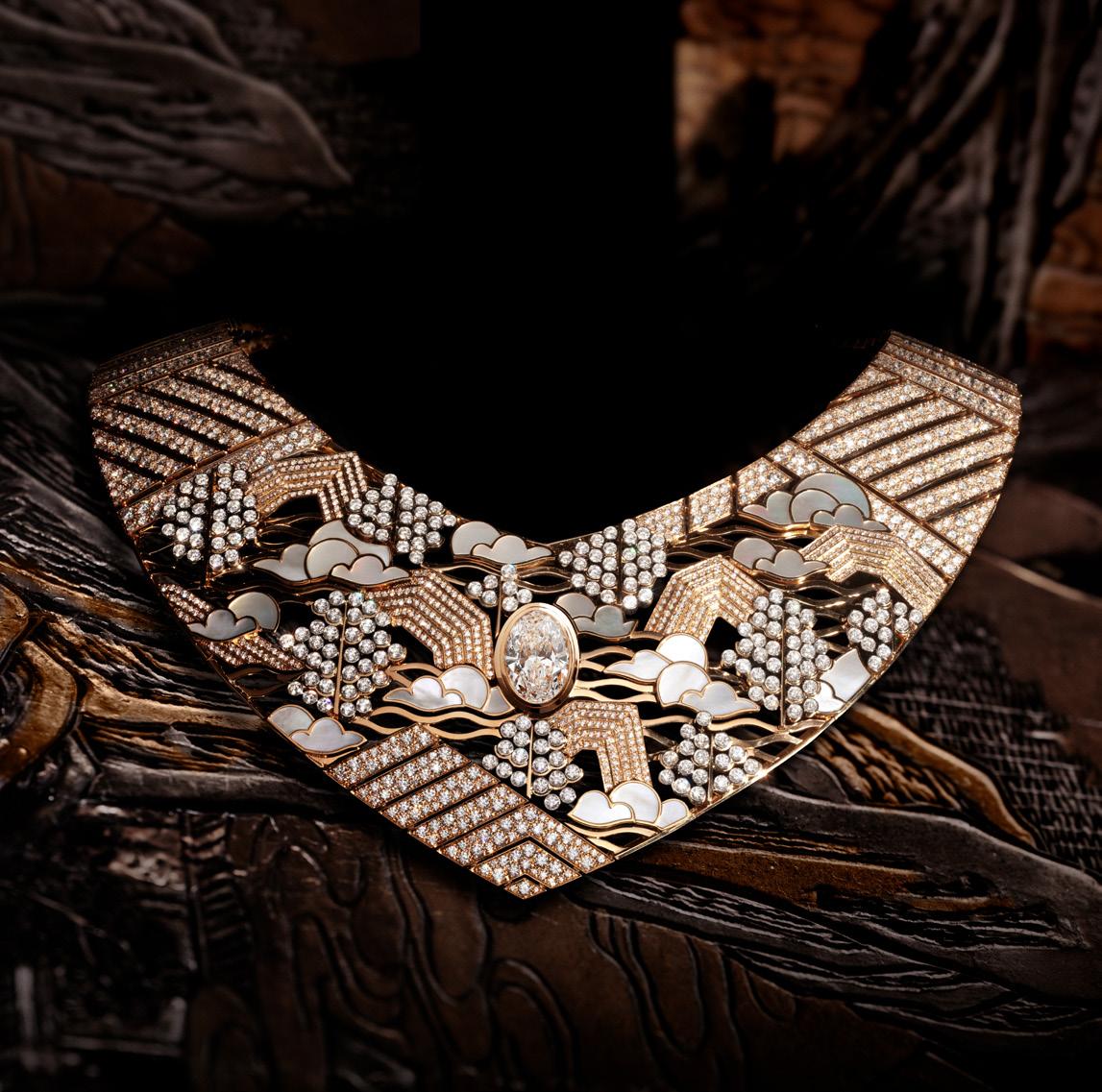
 By Phyllis Schiller
By Phyllis Schiller
“[The designer used] her courage and intuition to help women show off their natural elegance and style”
Ever since its inaugural diamond-centric collection debuted over 90 years ago, Chanel’s high-jewelry creations have embraced the fashion flair of founder Gabrielle “Coco” Chanel. Chanel High Jewelry, a slipcased new tome by Julie Levoyer and Agnès Muckensturm, delves into the house’s recurring themes and symbols, exploring the significance they had for the famed French couturier whose designs became wardrobe staples of well-dressed women.
It all began with an invitation from the London Diamond Corporation to revitalize diamond sales. The result was Chanel’s Bijoux de Diamants collection in 1932. Showcasing the brilliance of diamonds, the pieces centered around
themes of comets, the moon and the sun. The book’s extravagant array of photos and archival images provides a visual through-line from that initial collection to contemporary iterations.
Sprinkled throughout are quotes from and photos of Chanel herself that offer the reader a glimpse of the woman behind the designs. The volume’s four sections — “Origins,” “Symbols,” “Spirit” and “Allure” — place the jewelry’s themes in the context of her life.
Born in August, Chanel embraced the lion, her astrological symbol. Its strong, proud presence appears in pendants and necklaces, rings and bracelets. In a nod to a childhood memory of walking past wheat fields with her father, her designs also depicted sheaves of wheat
in the summer sunshine, sparkling with gemstones and diamonds.
The camellia flower was a favorite for Chanel; she admired its geometrical shape, which she reinvented in diamonds and precious stones. Pearls were a talisman she favored as well, whether in earrings, chokers, or single or multiple strands. Then there was the number five — her lucky number and the namesake of her groundbreaking fragrance. Both the numeral and the Chanel No. 5 bottle have served as motifs in the brand’s collections.
Among the other elements that provided fodder for Chanel’s designs were Venice’s baroque and byzantine splendors, the vibrancy of the Ballets Russes, and the “Café Society” that allowed her to mingle with aristocrats, artists and the bohemian avant-garde. The tweed suits of her lover, the second duke of Westminster, figured in her works as well, as did the days she spent aboard his yacht, The Flying Cloud.

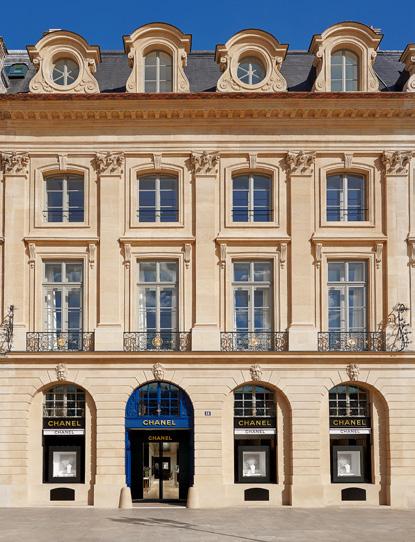
In all of these creations, the book says, she used “her courage and intuition to help women show off their natural elegance and style.”
Chanel High Jewelry was published by Thames & Hudson in March.
What’s in a name? Quite a lot when it comes to family-based jewelers. The accumulated expertise in handling jewels and dealing with customers attracts a clientele that can span multiple generations.

“The fact that we have been around for as long as we have demonstrates to people that we are a business they can rely on and trust,” says Mark Schaffer, director of New York-based antique and jewelry business A La Vieille Russie. “It’s a family tradition that we build relationships…that last a lifetime.”
Established in 1851, the company seeks pieces that “utilize materials and stones in innovative ways,” he relates. “We don’t acquire anything that we would not want to own ourselves.”
A legacy to live by
Establishing trust is also part of the business model for Lee Krombholz, third-generation owner of Krombholz Jewelers in Cincinnati, Ohio. “Clients see us present at our store and have had positive experiences in the past,” he says. Many “have shopped with us in a multigenerational capacity.”
Krombholz’s daughters Izzi and Kirtley are the fourth generation to join the company, which opened in 1940. Over the years, he has maintained its identity but continued to adapt it to reflect the current owners. “This authenticity is extremely important to our family.”

“The fact that we have been around for as long as we have demonstrates to people that we are a business they can rely on and trust”
MARK SCHAFFER
His guiding principles: “Always act with clients’ interests in mind. Without integrity and trust, you can’t have a successful business. Always be fair. Make sure what you are selling will have lasting quality. Only sell jewelry you believe is a good value. Don’t rush an order just to finish a job; make sure it is done correctly. Always treat clients with respect.”
As the third-generation owner of Walton’s Antique and Estate Jewelry, which has deep roots in Franklin, Tennessee, Julie Walton Garland has clients who fondly remember her grandmother.



Melba Walton founded the business nearly 50 years ago, and “her kindness toward everyone who came in the showroom is one of our most important founding business concepts,” says her
granddaughter. “She cared for her clients as people, not just another sale. We have continued her legacy in that way and have built on it to create an even more personalized customer experience.”
To that end, the store — which specializes in pre-1940s antique and estate jewelry — offers extensive aftersales support, including “cleanings, repairs, resizing, maintenance, etc. Our clients can rely on our trusted jeweler to take care of their cherished pieces for generations to come.”
“As our history progresses, so do the pieces considered over 100 years old, which has widened the timeline of our inventory,” Schaffer notes. “We noticed an increase in interest in 20th-century jewelry even before the current trend.”
For wider appeal to the next generation of collectors, he says, his company has developed more sources for “extremely high-quality and rare mid- to late-20th-century designed jewelry.”

Krombholz has acquired good sources as well. “Because we have bought and sold antique jewelry throughout our history, we are a trusted place to sell,” he says. “We are very lucky with the number of people who come in to sell us their heirlooms.”
One way he makes antique pieces more relevant is repurposing them. “For example, we regularly convert stickpins, brooches and various components into charms, ring tops and earrings.”
Garland uses word of mouth to grow her client base. “We support, encourage and recognize client referrals,” she says, “We send handwritten, personalized thank you notes with coffee gift cards to clients who make referrals.”
She also maintains long-term relationships with dealers around the world; hers is a company that “dealers trust and want to work with. Our professionalism, quick response, and extremely prompt full payments make us an exceptional business partner, [and] word quickly spreads throughout the industry.”
“Only sell jewelry you believe is a good value. Don’t rush an order just to finish a job; make sure it is done correctly”
LEE KROMBHOLZ
“We send handwritten, personalized thank you notes with coffee gift cards to clients who make referrals”
JULIE WALTON-GARLANDDiamond bar ring in platinum and 14-karat white gold, made from an antique brooch and vintage band at Krombholz Jewelers. Below: Victorian enamel and diamond pendant from Walton’s Antique and Estate Jewelry. Opposite: Cartier yellow-sapphire and diamond ring, circa 1950, from A La Vieille Russie.






Scandinavian Airlines System, and one of the brand’s greatest successes. During the mid-1960s, several Swiss watchmaking firms called on the young designer to create what would become their most emblematic models. At Omega, he renewed the Constellation collection; Audemars Piguet approached him to design the Royal Oak; and at Patek Philippe, he created the legendary Nautilus.

“Prior to him, companies used in-house designers who were not named,” explains Wind. “Genta became larger than life by designing watches for essentially all of the important Swiss companies.”

Alongside his collaborations with these brands, Genta launched his own company in 1969. Today, it is set to
an incredible design catalogue, and his fingerprints are felt through many of the iconic watch designs today. I am also hoping we see some of the Disney characters” — a reference to the line of Genta watches featuring icons like Mickey Mouse, Donald Duck and Goofy.
Dealers should also anticipate a renewed interest in some of Genta’s oldest vintage models, says Wind. “That has been the case with Daniel Roth watches since [that] company relaunched this year. Values on the older pieces generally increase when a brand relaunches. The Disney and other cartoon-character watches — especially the mechanical ones and not quartz ones — are highly desirable to collectors.”

Supersized styles might be having a moment in the jewelry world, but when it comes to horlogerie, smaller dimensions are what collectors currently covet. Over the last few years, the resurgent interest in vintage watches has fed a growing hype around timepieces spanning 32 to 36 millimeters, which hark back to the popular sizes of the 1920s to 1960s.
It’s not just vintage models enticing collectors, either, says Mark Toulson, head of buying at UKbased retailer Watches of Switzerland. Existing icons, newly unveiled in downsized proportions, are also hitting a horological sweet spot.
“Over the last couple of years at Watches & Wonders, and particularly this year’s [edition of the] fair, we’ve seen a greater number of smallersize watches,” he reports, referencing models like Chopard’s Happy Sport, which arrived in a 25-millimeter version, and the Tudor Black Bay 54, which the Swiss watchmaker faithfully reproduced in a slimmed-down 37 millimeters.
Even Panerai, the Florentine brand best known for its chunky, purpose-built designs, has been producing scaled-down models. “They debuted a smaller Luminor and brought the Radiomir, which is normally 45 millimeters, down to a 40-millimeter size,” says Toulson.

He connects the size shift to “a growing trend of gender-neutral watches. Both men and women feel comfortable wearing a 40-millimeter size. It’s not over the top. It’s not ostentatious. It’s a Goldilocks size: It’s just right.”
On the secondhand market, “there is always a cycle with fashion, and people are going back
to the 1920s and early-1950s aesthetic and loving the small watch again,” says Eric Wind, founder of luxury pre-owned-watch dealer Wind Vintage. “Part of this trend is driven by Asian and particularly Japanese collectors, where small watches have remained popular for decades.”
He highlights sought-after designs like the 31-millimeter Patek Philippe Calatrava Ref. 96 and the early Rolex Oyster Bubbleback watches. Also catching collectors’ eyes are discontinued cult favorites like the 34-millimeter iterations of the Rolex Air-King and Date models.
Wind, too, points to the gender-fluid appeal that such timepieces have. “Women are also adopting smaller watches,” he says, “and there is the new


Scaled-down watches can be as small as 25 millimeters, like the Chopard Happy Sport, or as large as 40 millimeters, like the Panerai Radiomir
trend of watches not being gendered like they were in the past.”
Age appears to be a factor as well. “Younger collectors in particular seem to be gravitating toward the smaller models, particularly since they weren’t around in the ’00s for the craze of oversized watches,” he says.
For some, though, it’s simply a practical choice. “There are many people with smaller wrists who just want watches to sit properly on the wrist and not overhang,” he adds.
Short-term fad?
Is the small watch just a fleeting trend, or does it have staying power?
Watches between 40 and 42 millimeters now account for 75% of the mix at Watches of Switzerland, says its head of buying
“You’ve got to give these trends two, three, five years to see how it plays out,” Toulson maintains. “But I certainly think smaller sizes are going to be popular for at least several more years. The sweet spot for watch sizes seems to be between 40 and 42 millimeters. In 2018, that was about 68% of our mix [at Watches of Switzerland]. It’s now 75%.”

Zenith Chronomaster
Revival A3817
With the Chronomaster Revival, Swiss watchmaker Zenith breathes new life into one of its most soughtafter references. Indeed, the new A3817 was one of the first watches to bring authentic vintage sizing to the mainstream, with a diameter identical to that of the historical 1971 model. Complete with the familiar angled tonneaushaped case and pump-style pushers, it’s proven quite the contemporary gem.
Royal Oak Selfwinding 34 mm.
Updated classics in compact proportions have become popular among collectors. With a case thickness of just 8.8 millimeters, 32 baguette-cut diamonds studding its white gold architecture, and a smoky Grande Tapisserie dial domed in sapphire crystal, this beloved model commands attention.

Vacheron Constantin Overseas SelfWinding 34.5 mm. Earlier this year, heritage watchmaker Vacheron Constantin introduced a quartet of new models to its emblematic Overseas collection, including a 34.5-millimeter style in steel or pink gold. With this latest size, it has subtly reworked the codes of the existing 41-millimeter model to achieve a collector’s appeal, with a slimmeddown silhouette and a lacquered sunburst dial in deep royal blue.
 IMAGES: GUCCI; CHOPARD; ZENITH; VACHERON CONSTANTIN; AUDEMARS PIGUET
IMAGES: GUCCI; CHOPARD; ZENITH; VACHERON CONSTANTIN; AUDEMARS PIGUET
1 GEM WAVE
Gem Wave carries a variety of shapes, sizes and qualities of diamonds, including fancy colors. It is particularly strong in -2, stars, melee, and diamonds 1 carat and under.
Telephone: + 1 800 622 9283 gemwave.com
3 B.H.C.
B.H.C. Diamonds specializes in top makes and consistent assortments ranging from 0.003 carats to 35-pointers in D to K colors, from flawless to promotional qualities.
Telephone: +1 212 997 9195 bhcdiamonds.com
5
Padmavati Exports has built its reputation on making diamonds more accessible, transactions more convenient, and the experience as fulfilling as possible.
Telephone: +1 212 869 0544 padmavatiexports.com
45
Diamonds for Life specializes in providing premium-quality GIA- and EGLcertified loose diamonds, diamond engagement rings, wedding bands, diamond pendants, and fine jewelry to the public at wholesale prices.
Telephone: +1 213 955 5900 diamondsforlife.com
Pristine Gems is a family-run manufacturer of fancy-shaped diamonds, boasting 28 years of experience. Dedication to client needs and excellent service is the motto of this company.
Telephone: +1 212 840 2500 pristinegem.com
RDI Diamonds is a leading supplier of loose diamonds and has one of the largest inventories in the world. It is also one of the largest memo houses in the US.
Telephone: +1 585 225 3390 rdidiamonds.com
INSIDE FRONT COVER GEMFIELDS
Gemfields is a world-leading supplier of responsibly sourced colored gemstones. The operator of major ruby and emerald mines, Gemfields believes in mining gemstones with transparency, legitimacy and integrity.
Telephone: +44 207 518 3400; gemfields.com
16
DE BEERS GROUP – IGNITE
Ignite is a division of De Beers focused on promoting innovation across the diamond value chain. Activities include research, technology incubation, sales, and promoting joint ventures and partnerships.
Telephone: +44 207 891 5874; ignite.debeersgroup.com
20-21
BAHRAIN INSTITUTE FOR PEARLS AND GEMSTONES (DANAT)
Founded in 2017, Bahrain Institute for Pearls and Gemstones (DANAT) is a world-class gemological laboratory as well as an education and research center, with a particular focus on the testing and study of natural pearls.
Telephone: +973 1720 1333; danat.bh
40
Delgatto DFF offers those in the industry an easy, inexpensive, nonrestrictive way to access capital, as well as a no-cost marketing option.
Telephone: +1 212 681 9550; delgattodff.com
6
The Art of Jewellery is India’s number-one business magazine on the jewelry trade and industry. It is a one-stop source for cutting-edge information.
Telephone: +91 80 2520 1687 artofjewellery.com
14-15
Established in 1931, the GIA − a public-benefit nonprofit institute − is the leading source of knowledge, standards and education in gems and jewelry.
Telephone: +1 760 603 4000 gia.edu
All the trade shows and events you need to know about
5-8 INDEPENDENT JEWELERS ORGANIZATION (IJO) CONFERENCE
Cleveland, OH ijo.com
11-12 CHICAGO RESPONSIBLE JEWELRY CONFERENCE Chicago, IL chiresponsiblejewelryconference.com
13 RESPONSIBLE GEM BOUTIQUE
Chicago, IL chiresponsiblejewelryconference.com
13-14 SELECT JEWELRY SHOW Washington, DC selectjewelryshow.com
14-16 MELEE THE SHOW New York, NY meleetheshow.com
19-21 INTERNATIONAL JEWELLERY SHOW
Sydney, Australia jewelleryfair.com.au
24-27 MALAYSIA INTERNATIONAL JEWELLERY FAIR
Kuala Lumpur, Malaysia mijf.com.my
26-27 ATLANTA JEWELRY FAIR
Atlanta, GA atlantajewelryshow.com
27-28 SELECT JEWELRY SHOW Mohegan Sun, CT selectjewelryshow.com
30-SEP 1 JAPAN JEWELLERY FAIR
Tokyo, Japan japanjewelleryfair.com
2-4 BIJORHCA Paris, France whosnext.com/bijorhca
2-4 MIDORA LEIPZIG Leipzig, Germany midora.de
3-6 AUTUMN FAIR Birmingham, UK autumnfair.com
5-9 HONG KONG WATCH & CLOCK FAIR Hong Kong hktdc.com
6-10 BANGKOK GEMS & JEWELRY FAIR Bangkok, Thailand bkkgems.com
8-12 PALAKISS SUMMER Vicenza, Italy palakiss.com
8-12 VICENZAORO Vicenza, Italy vicenzaoro.com
10-11 SELECT JEWELRY SHOW
Dallas, TX selectjewelryshow.com
11-12 INTERNATIONAL WATCH & JEWELRY GUILD (IWJG) Miami, FL iwjg.com
14-17 MADRIDJOYA
Madrid, Spain ifema.es/madrid-joya
15-18 HARD ROCK SUMMIT Denver, CO hardrocksummit.com
18-24 JEWELLERY & GEM
WORLD HONG KONG
Hong Kong jgw.exhibitions.jewellerynet.com
20-21 THE JEWELLERY SHOW
London, UK thejewelleryshow.co.uk
21-24 PORTOJOIA
Matosinhos, Portugal portojoia.exponor.pt
29-OCT 1 COUTURE INDIA New Delhi, India coutureindia.show
29-OCT 1 INTERGEM Idar-Oberstein, Germany intergem.de

30-OCT 2 JEWELLERY & GEM DELHI New Delhi, India delhi.jewelleryfair.in
OCTOBER
3-5 CIBJO CONGRESS Jaipur, India cibjo.org
5-8 ISTANBUL JEWELRY SHOW Istanbul, Turkey istanbuljewelryshow.com
6 GIA JEWELRY CAREER FAIR Carlsbad, CA gia.edu
13-16 JIS FALL Miami Beach, FL jisshow.com
25-27 INTERNATIONAL
JEWELLERY TOKYO AUTUMN Tokyo, Japan ijt.jp
26-29 NEW YORK CITY
JEWELRY & WATCH SHOW New York, NY nycjaws.com
26-29 MUNICH SHOW Munich, Germany munichshow.de
29-31 JA NEW YORK New York, NY ja-newyork.com
NOVEMBER
1-5 JEWELRY & WATCH SHOW Abu Dhabi, UAE jws.ae
13-14 INTERNATIONAL WATCH & JEWELRY GUILD (IWJG) Miami, FL iwjg.com
13-19 NYC JEWELRY WEEK New York, NY nycjewelryweek.com
14-18 JEWELLERY ARABIA Sanabis, Bahrain jewelleryarabia.com
16-19 INTERNATIONAL JEWELRY + WATCH VIETNAM Ho Chi Minh City, Vietnam jewelrytradefair.com
30-DEC 3 JMA HONG KONG
INTERNATIONAL JEWELRY SHOW Hong Kong jewelryshows.org
Meet second-generation jeweler Kevin Vantyghem, vice president of Vantyghem Diamonds, which his family founded in 1973 in Ontario, Canada.
 By Sonia Esther Soltani
By Sonia Esther Soltani
What was the biggest challenge of joining the family business?
As you walk into a family business, the perception is that it’s easy, you’re just handed the job or position, unlike working for a corporation. So I think it’s putting in the time and being able to garner the respect of the customers and suppliers. You have to put in your own sweat equity, and there is more at stake with that as well.
What is the best advice you received at the beginning of your career?
Ask a lot of questions, be observant and curious, and learn, learn, learn! This is also true for your
entire career always be learning, curious and open to new ideas. The journey is a continuous process of improvement and being receptive to new knowledge and experiences.
What achievement makes you proudest?
Currently, we are celebrating our 50th year in business, and I’m proud to help celebrate this. It’s an acknowledgment and testament to what [my parents] Ralph and Arlette, the founders of the company, have built from the ground up. It is wonderful to be a part of this second generation of the family business and to be able to carry on the legacy and the wonderful partnerships we have created with our independent retail jewelers and industry professionals over these five decades.
What is the biggest lesson life or work has taught you?
One of the biggest lessons that life and work have taught me is the importance of balance. The lesson learned is that life is about more than just work and career achievements. It’s about finding equilibrium between work and personal life, pursuing one’s passions, fostering meaningful connections, and leaving a positive impact on the world.
Which diamond cut do you like most?

That’s a tough one. It can depend on the end design piece. Right now, I am really enjoying the look of radiant cuts, still a wonderfully brilliant diamond: [a] longer look with some nice edges and corners.
Where do you like to go on vacation?
Any vacation time or time off with my family is great. We love to travel and go on road trips together. We have recently liked to explore the many beautiful provinces in Canada, and the natural landscapes are extraordinary!

